On Thursday morning, we stepped into the ferry port, cleared immigration, and officially entered Japan. We hailed a cab (our very first car ride in this country) to the hotel. The city center was only 1.5 miles away and I knew the path was fairly walkable. However, the sun was already scorching at 8am and there was no way we would survive beyond a couple blocks.
Note: Fukuoka is the largest city on the Japanese island of Kyushu. It and Hakata used to be two separate cities. When the two merged, Fukuoka rose above to become the dominant name for the city. However, the bay, the port, and the train station remained Hakata. This was pretty confusing at first because the two names commingled on the map.
Ichiran the Original Store
We aren’t big on Japanese ramen, but the one brand we do get excited about is Ichiran. So while in Fukuoka, its birth place, we figured we’d go to the original location to pay some respect. It was a short walk from the hotel and open around the clock, so we went there first thing in the morning.
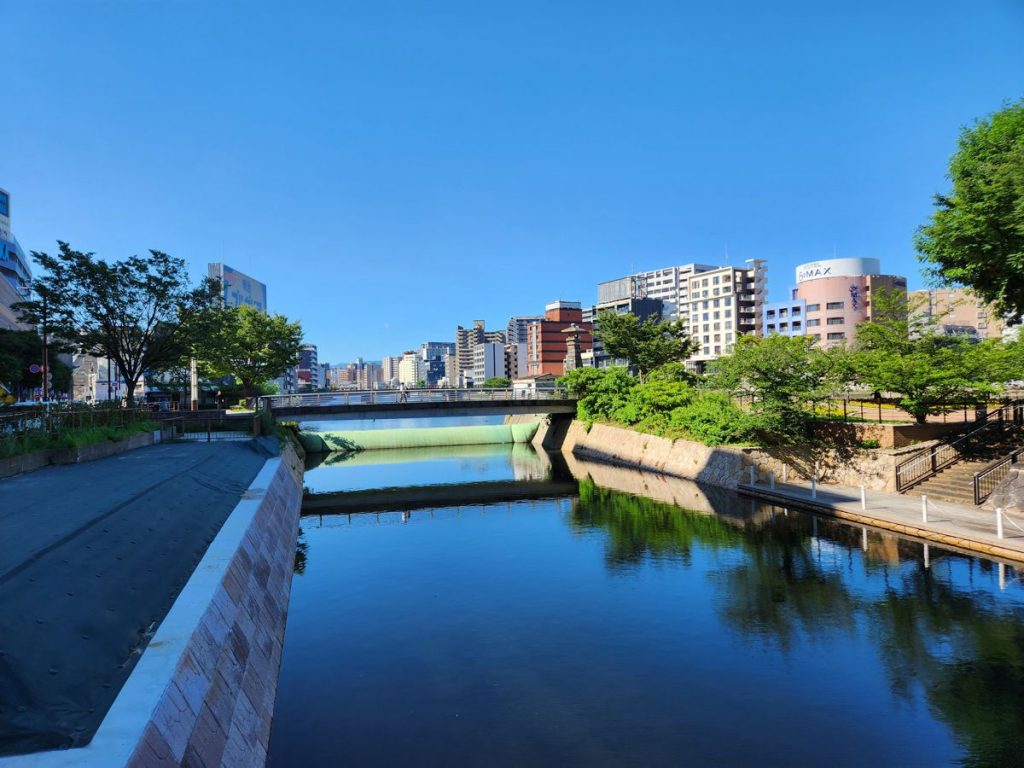
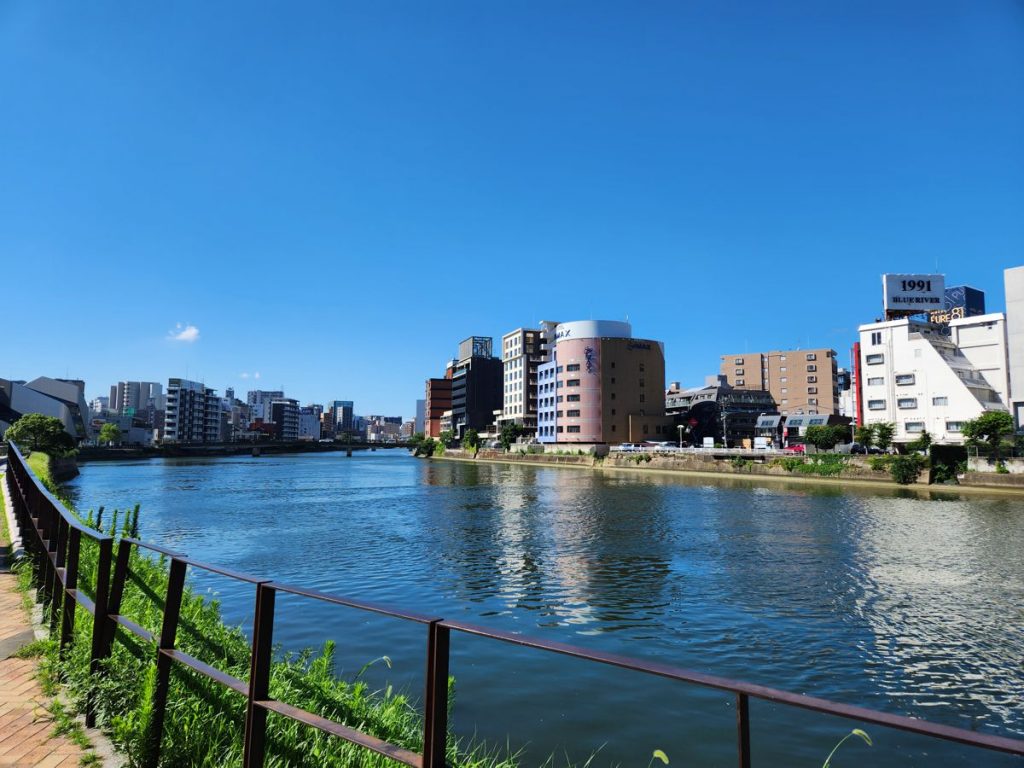

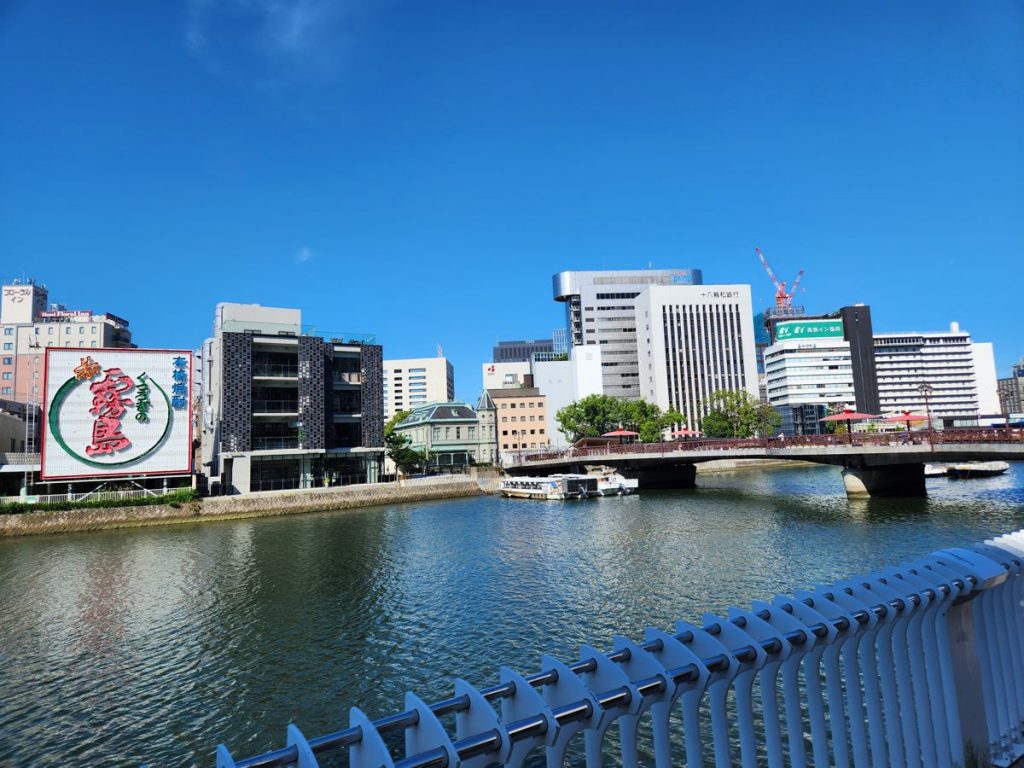
Ichiran is a chain with many outlets throughout Japan and overseas. No individual restaurant should attract much hype, but this original location still drew a sizable crowd. Objectively, waiting in a half-hour line in this summer heat for a bowl of ramen was ridiculous. But we did what tourists do, so…
Hilariously, our first real encounter in Japan was being yelled at, twice, by this Ichiran’s door lady. Hong was gonna hold a spot in line while I took the kids to grab some cold drinks at the 7-Eleven next door; I also grabbed one of those red umbrellas that the restaurant let patrons use while waiting in line, so she had shade. Turned out that I shouldn’t have reached for the umbrella myself, and no holding spots in line was allowed even for two minutes. It was a reminder of how rigid rules in Japan could be and how seriously people took them.
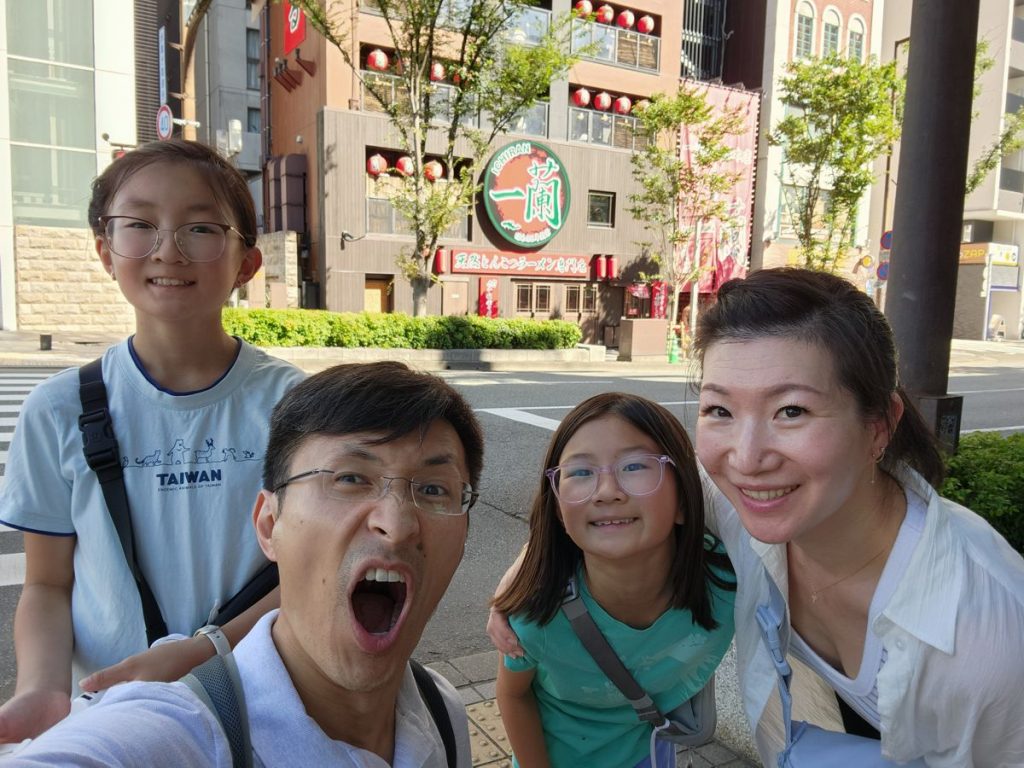
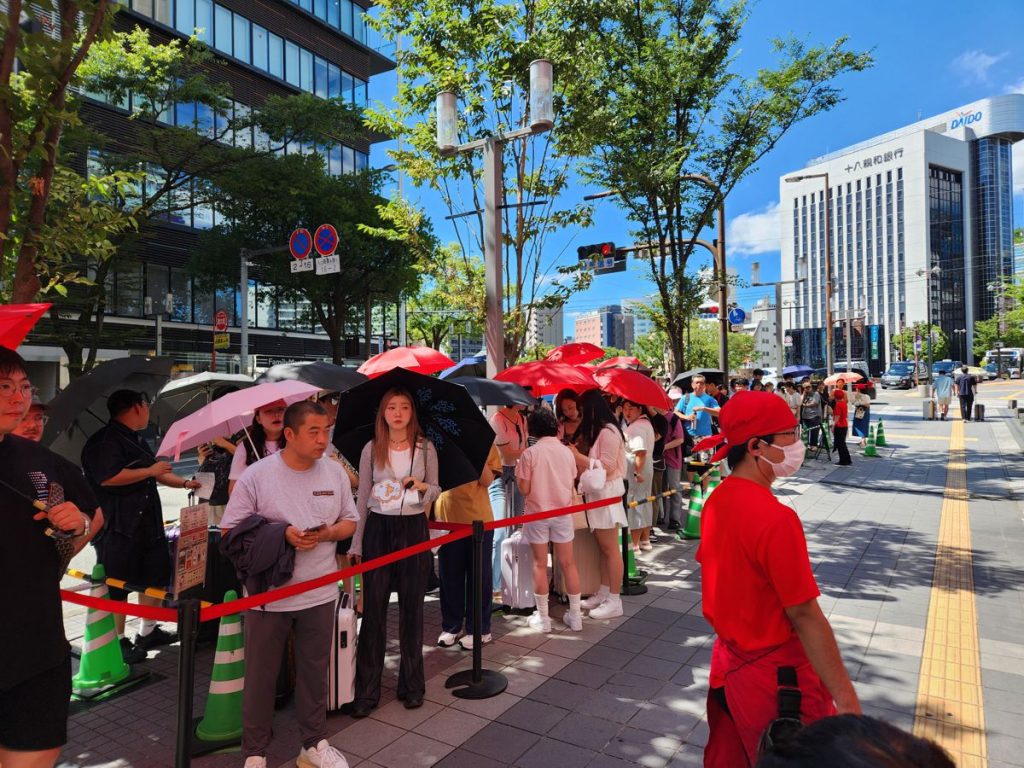
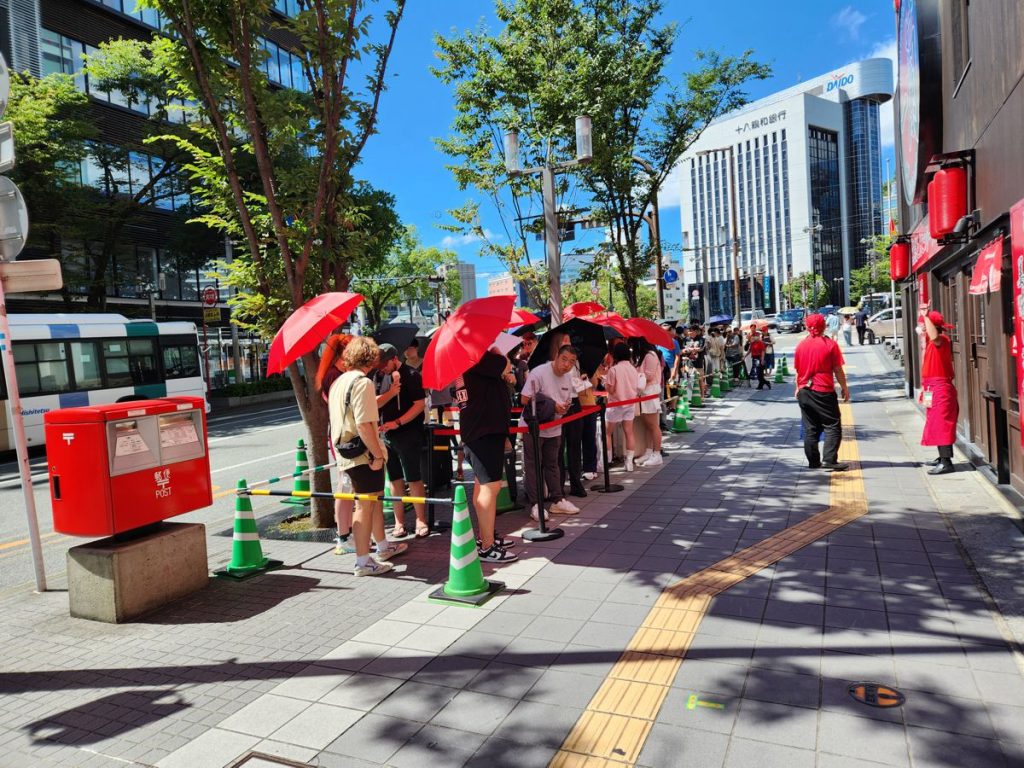
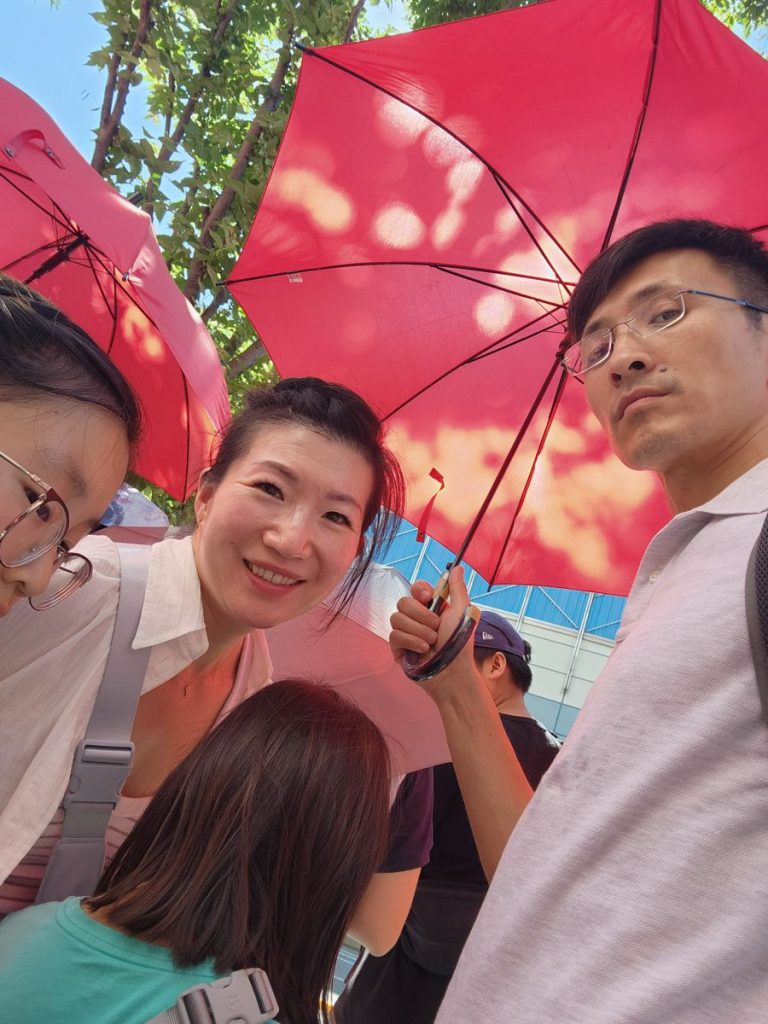
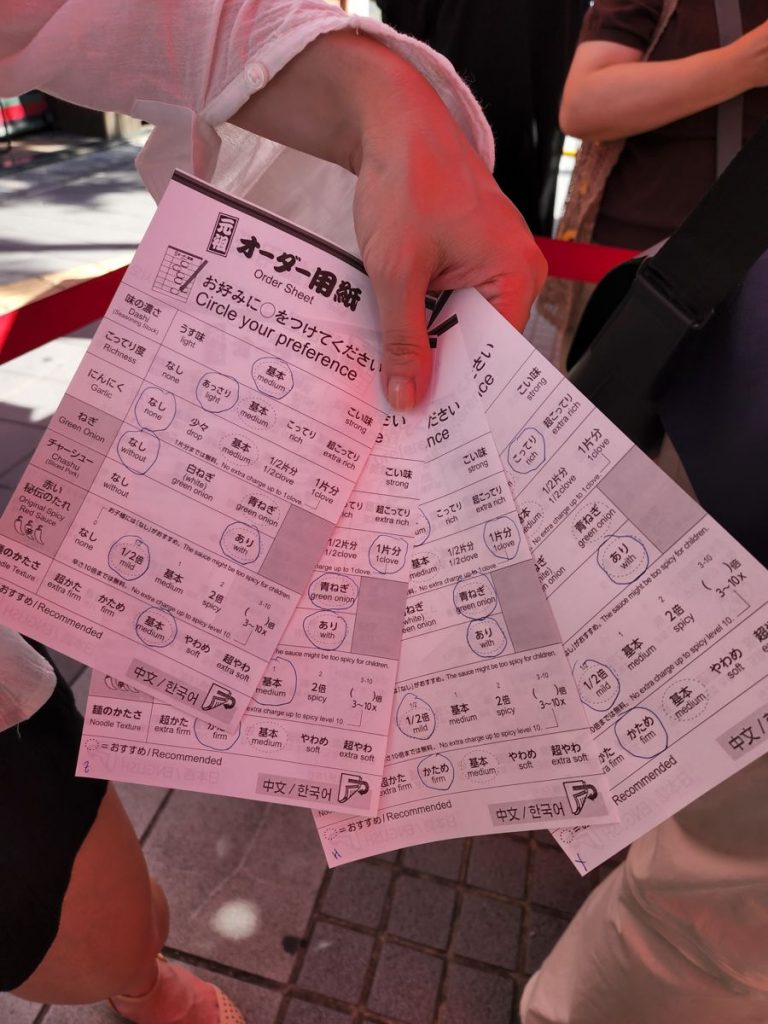
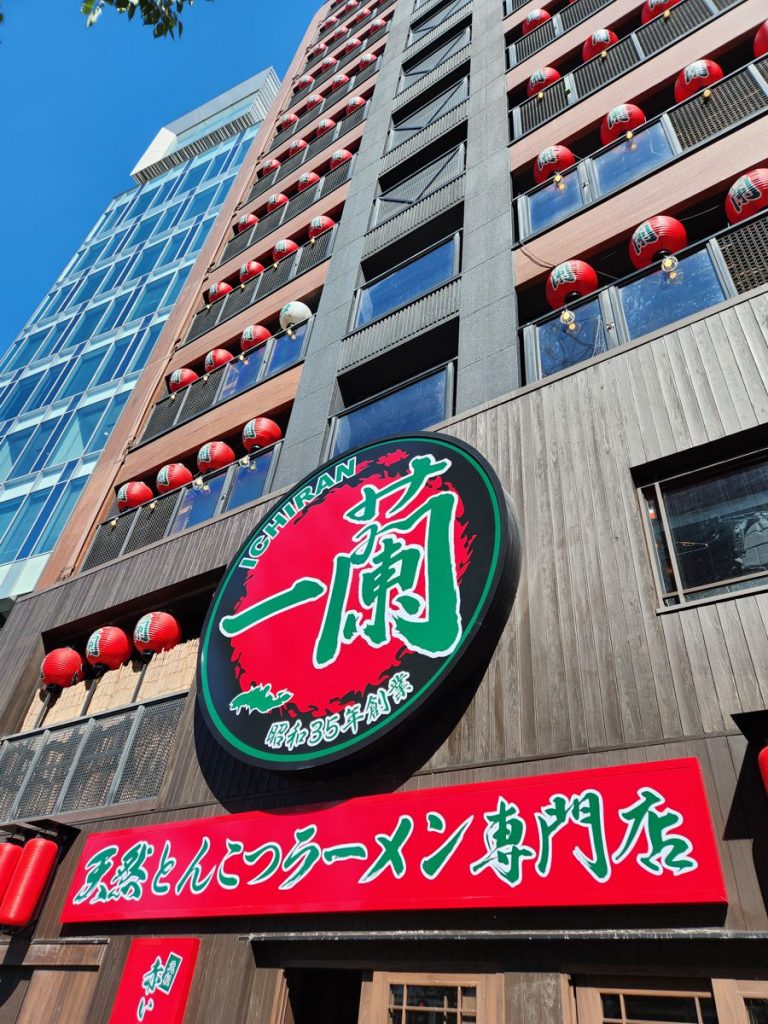
Once inside, honestly, it was just like other Ichiran locations we had been to. It didn’t even have many seats despite the facade being gigantic. The food was good as expected, and Xuan was especially a fan, but it wasn’t proportional to the energy expenditure it took to eat here.

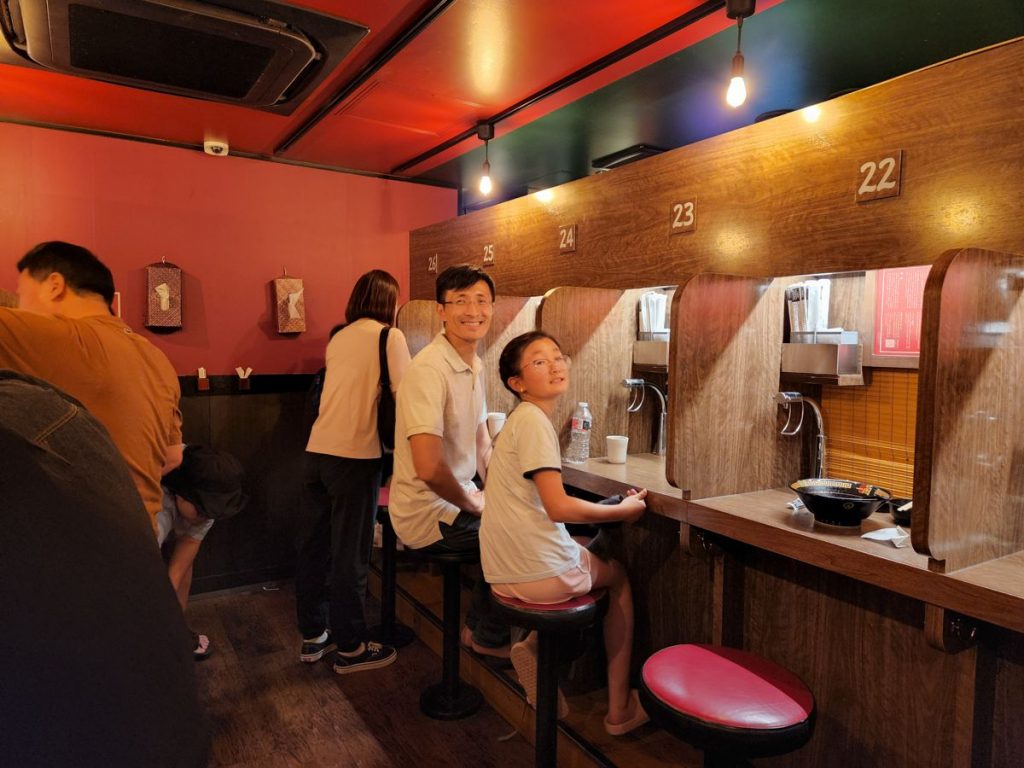
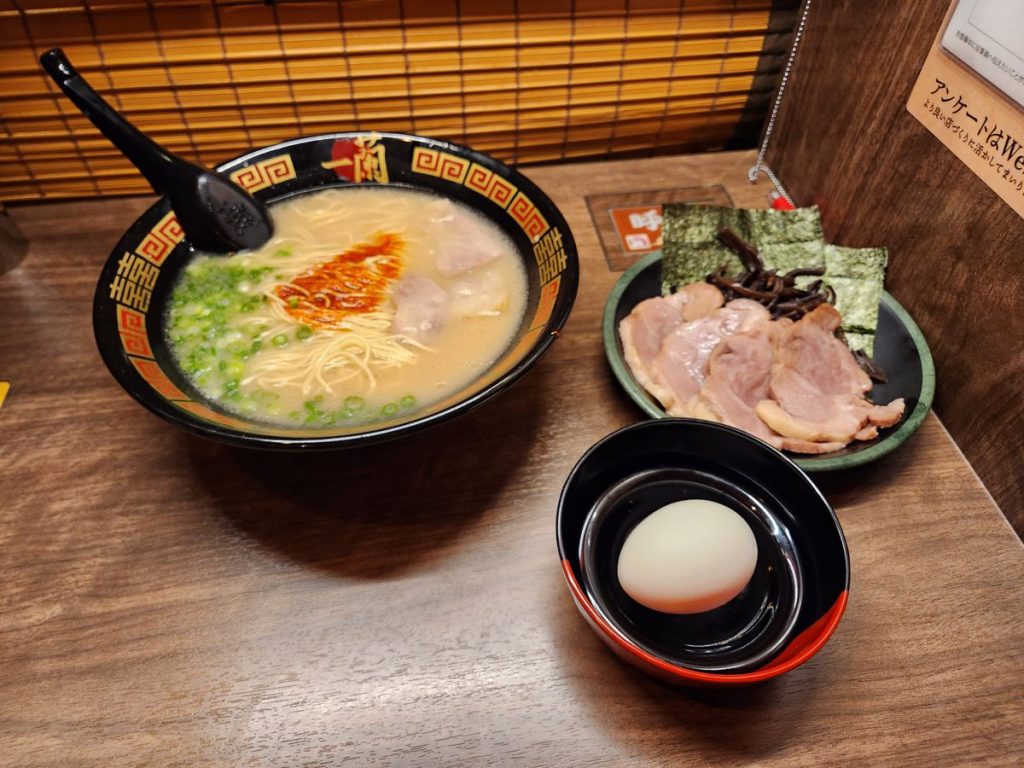
LaLaport Fukuoka
Because the ramen breakfast took more time and energy than I had anticipated, we skipped the old town and went straight to LaLaport, a fancy mall. We got there by taking the subway for one stop, transferring to an JR train for one stop, and then walking a half mile. The last part was so hard in the mid-day sun.
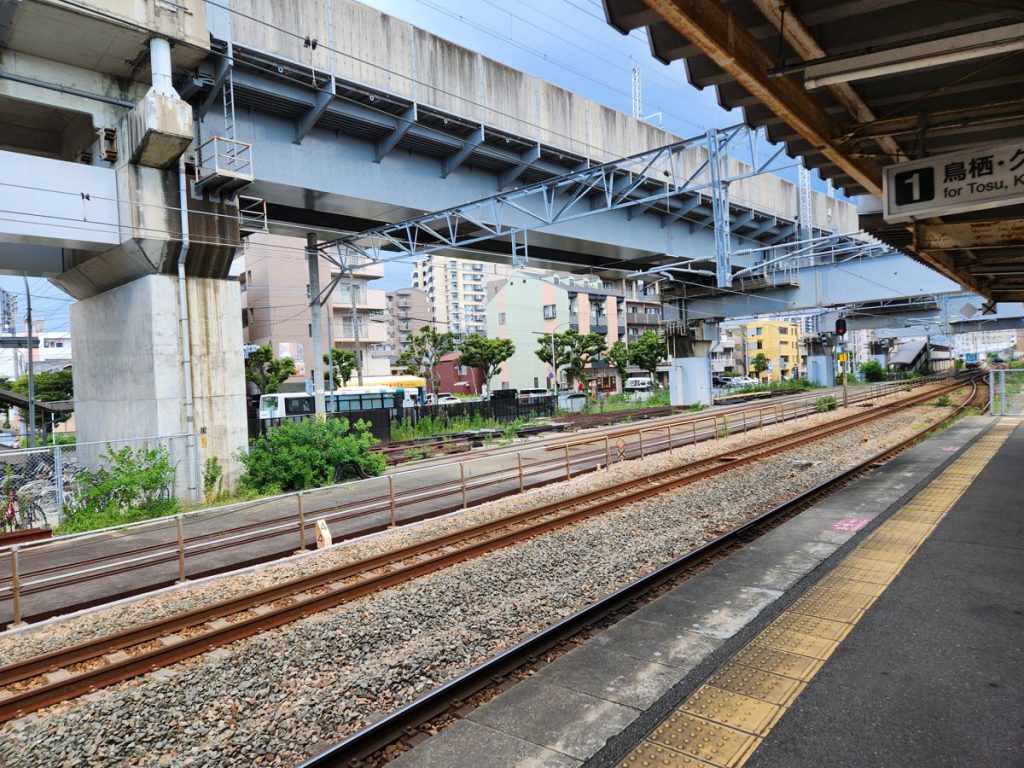
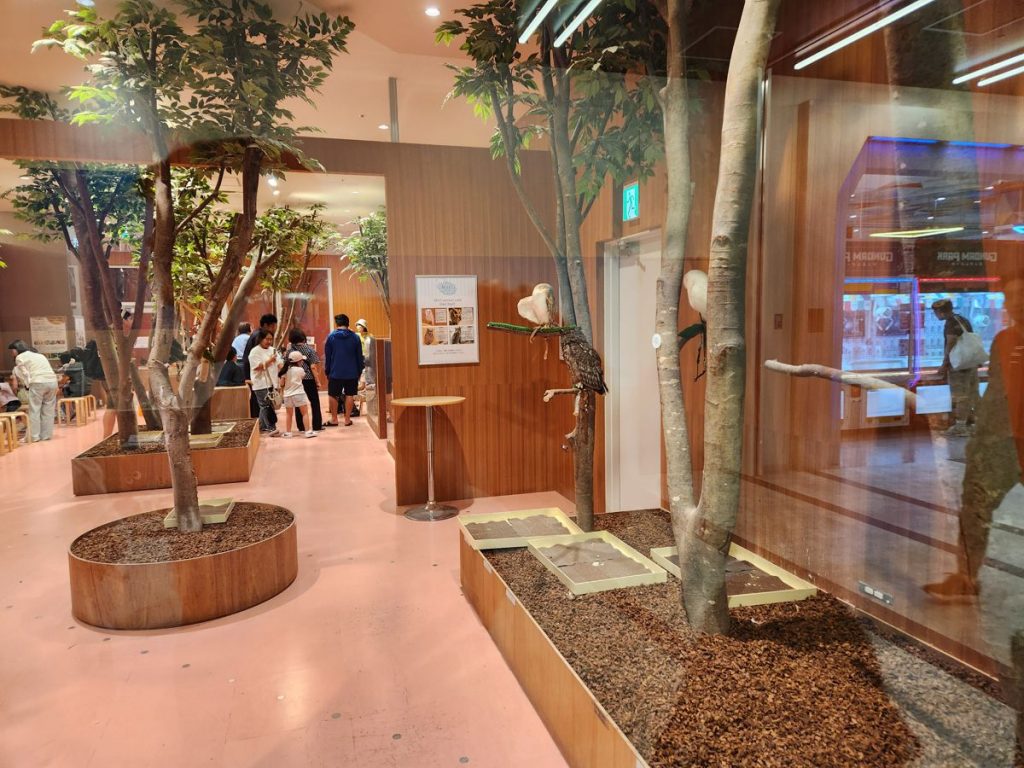
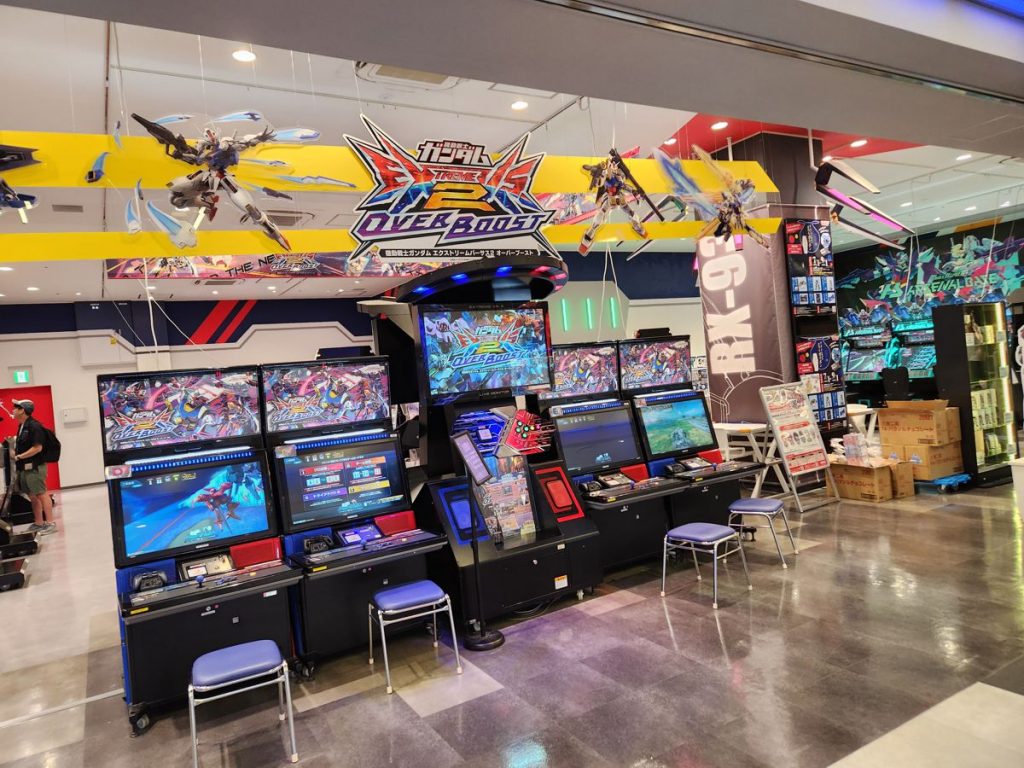
We came to this mall to see the tallest Gundam statue in the world, which will get its own post. We also had a satisfying lunch and an excellent matcha dessert. It was the kids’ first time trying a legit conveyor belt sushi and they loved it. The highlight was the raw horse nigiri, which Xuan ordered a second.
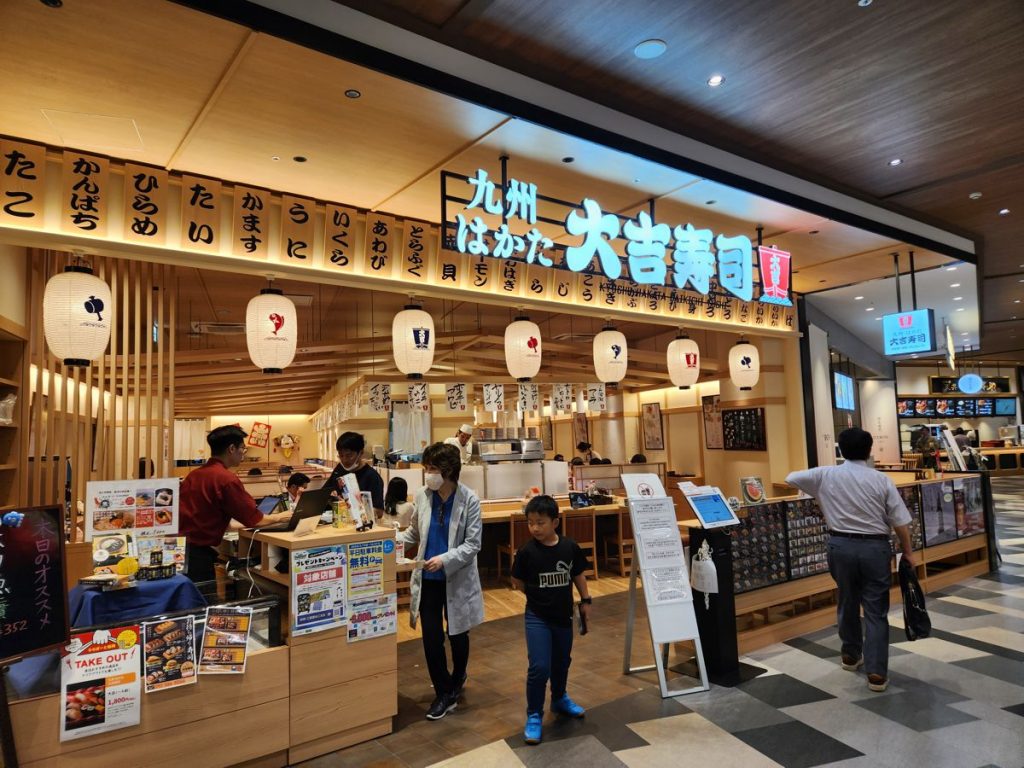
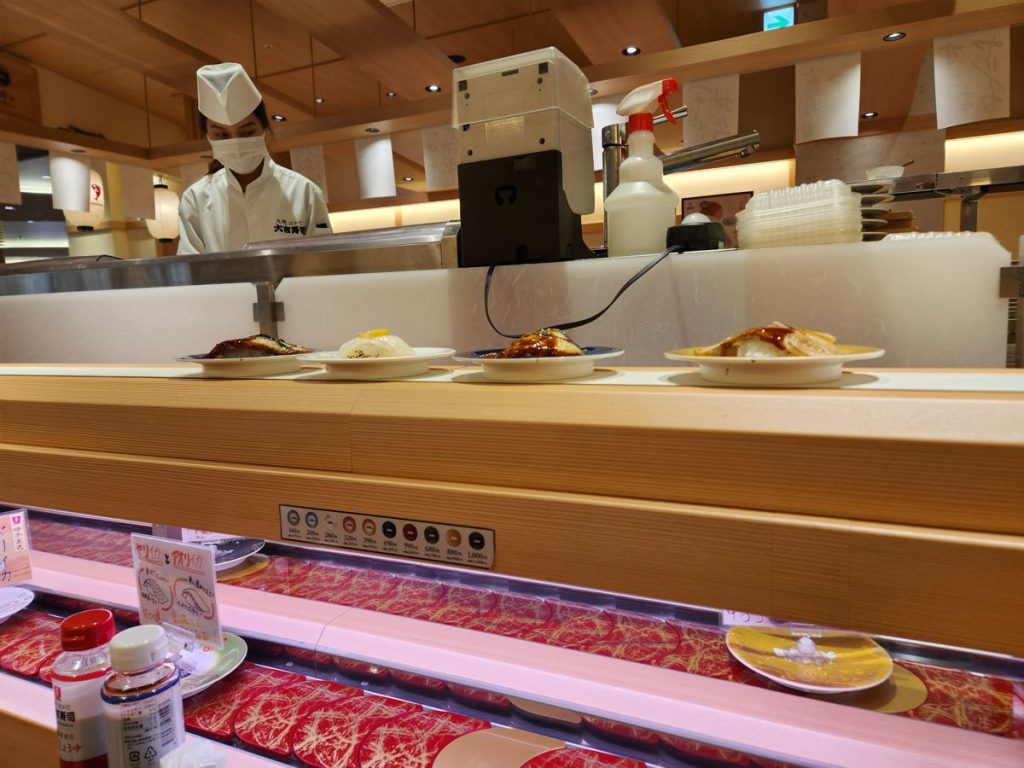
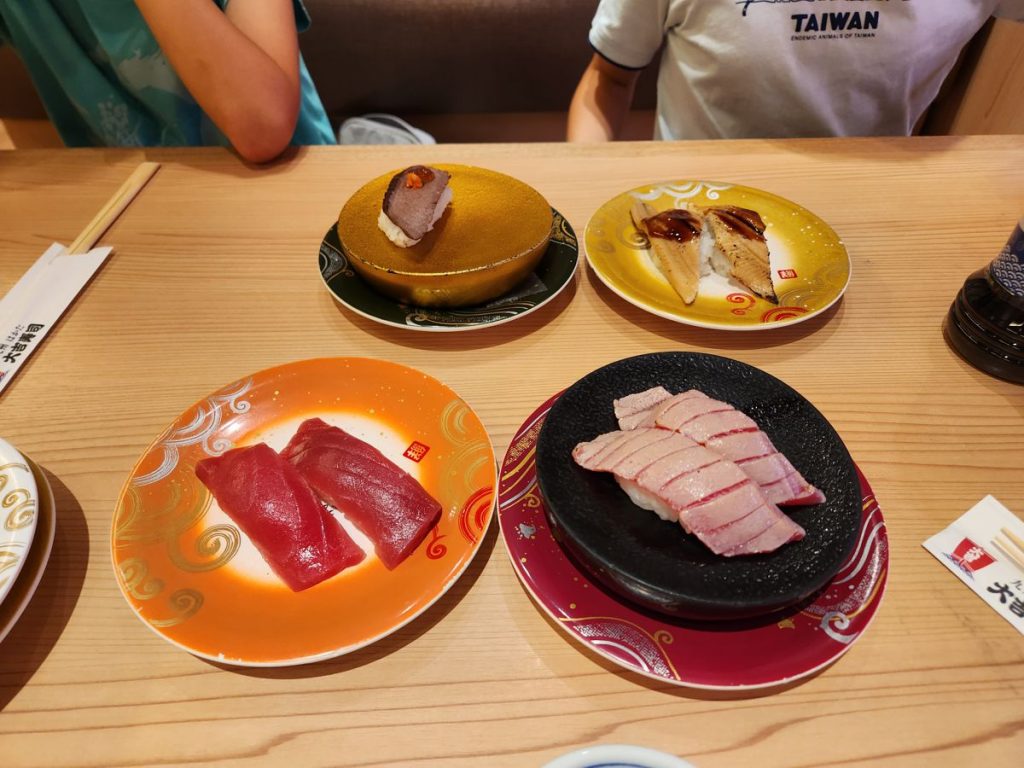
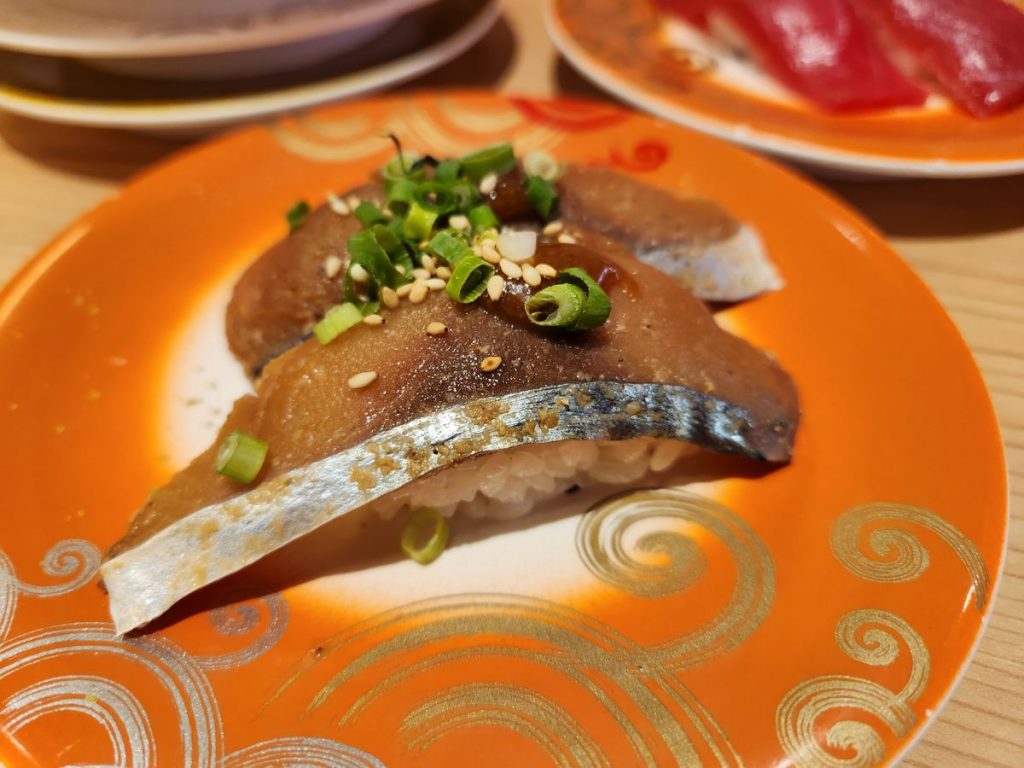

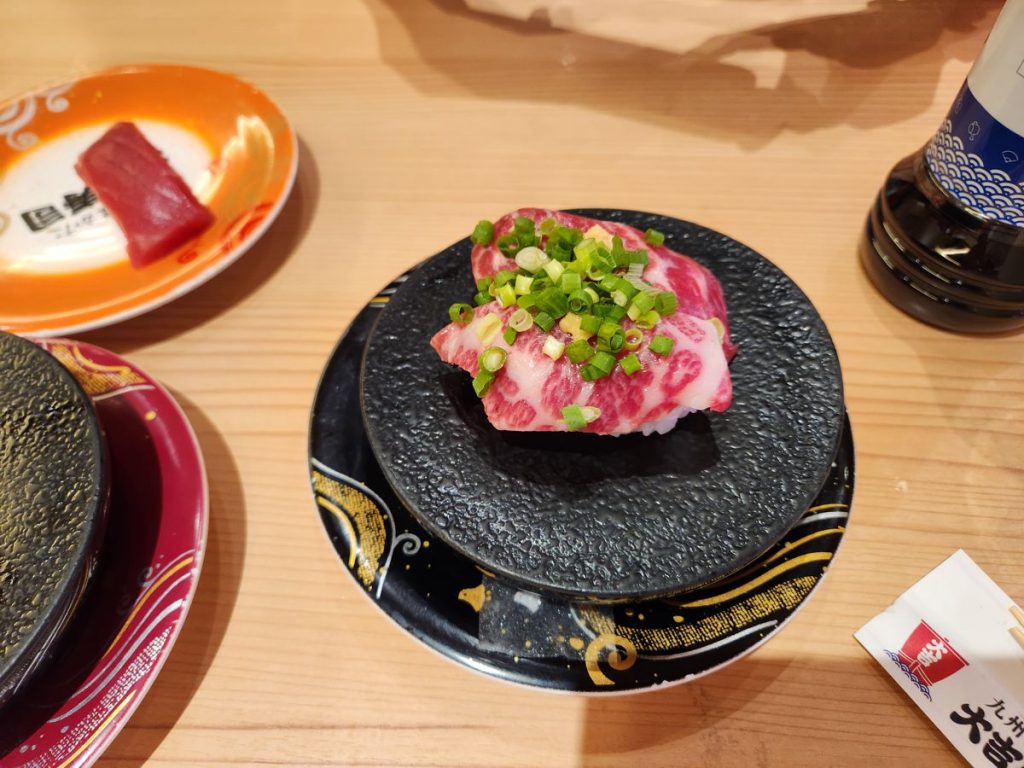
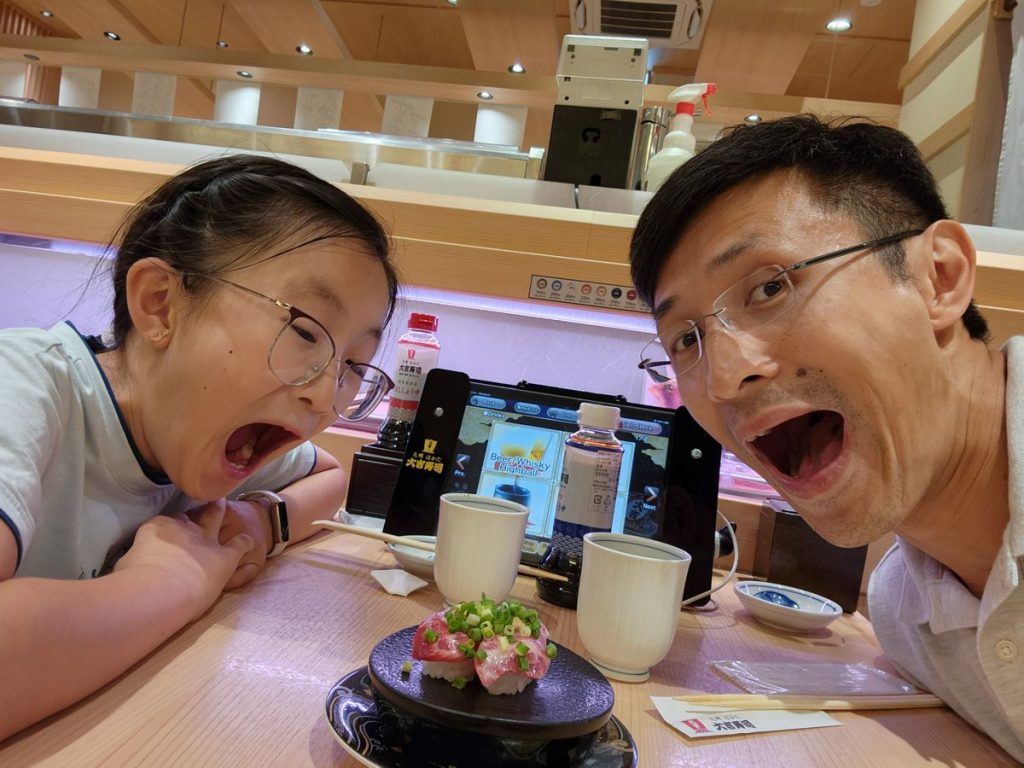
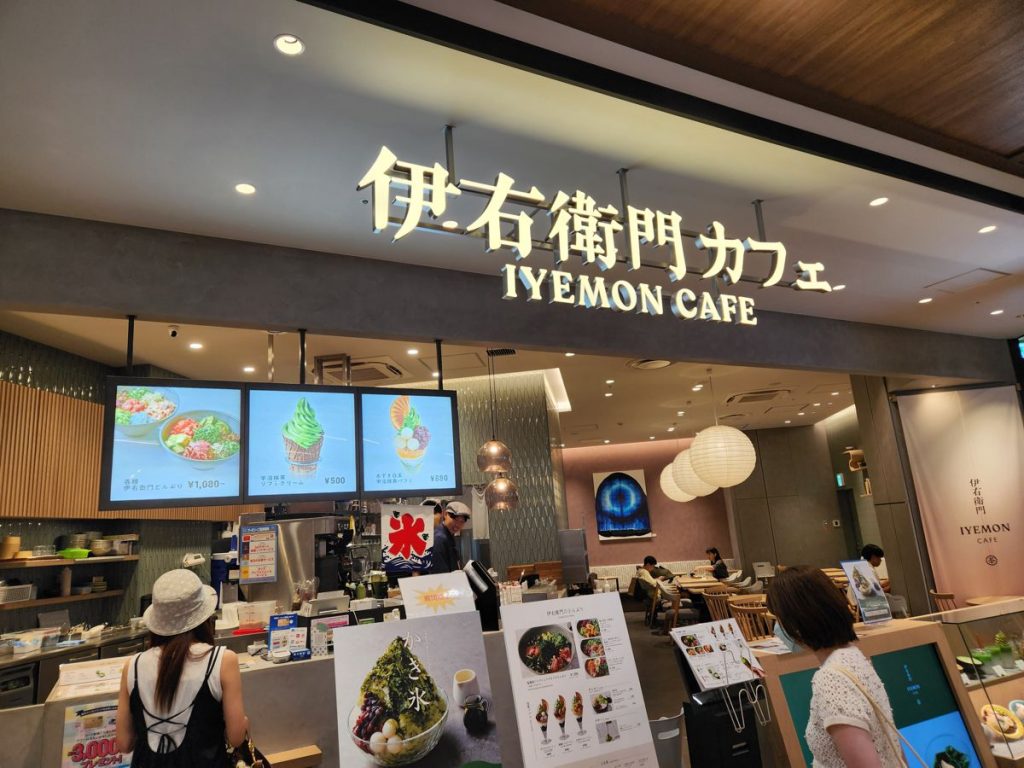
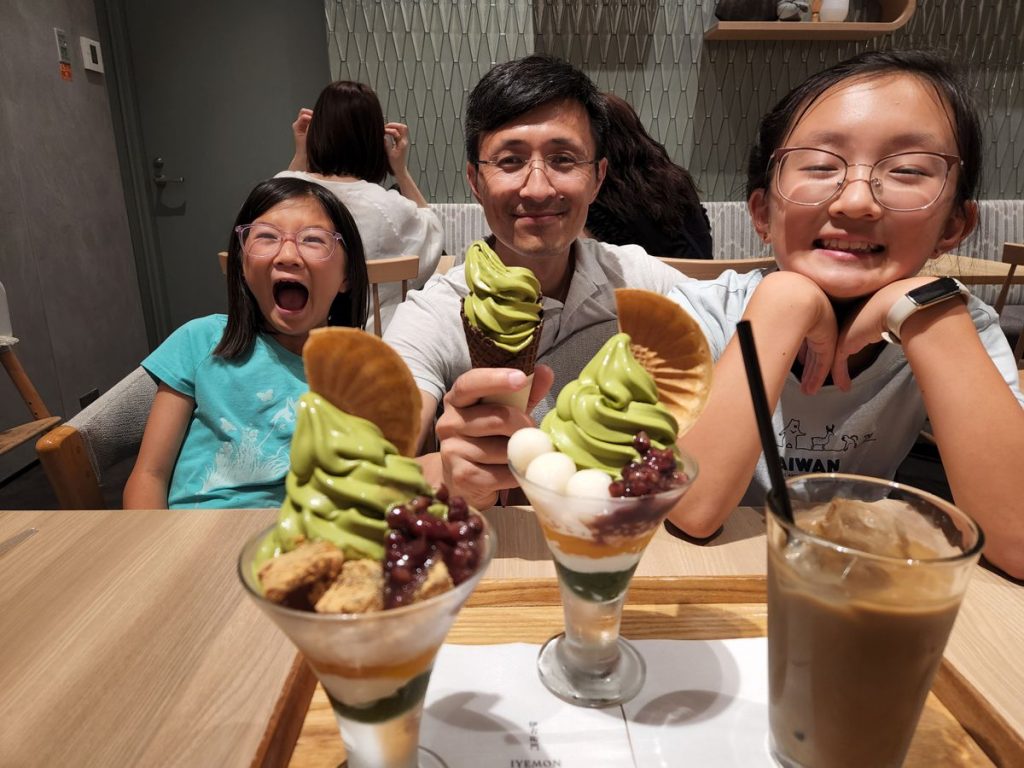
Grand Hyatt Fukuoka & Canal City Hakata
We stayed a night at Grand Hyatt Fukuoka, a very nice and centrally-located hotel. The lobby was connected to Canal City Hakata, a mall designed to look like a river canyon with a store selection heavy on toys and games. The plaza and water fountain separating the two had regularly scheduled shows running throughout the day, and it was incredible how well the hotel’s glass windows insulated guests from the blasting music and exploding water sounds on the other side.
The connectivity to Canal City made this Grand Hyatt our favorite hotel on this trip. It was awesome being able to hop downstairs to grab McDonald’s, conveyor belt sushi, souvenirs, and photo stickers without having to cross a street. Heck, I could have even gotten some limited-edition Gundam if I wanted to.
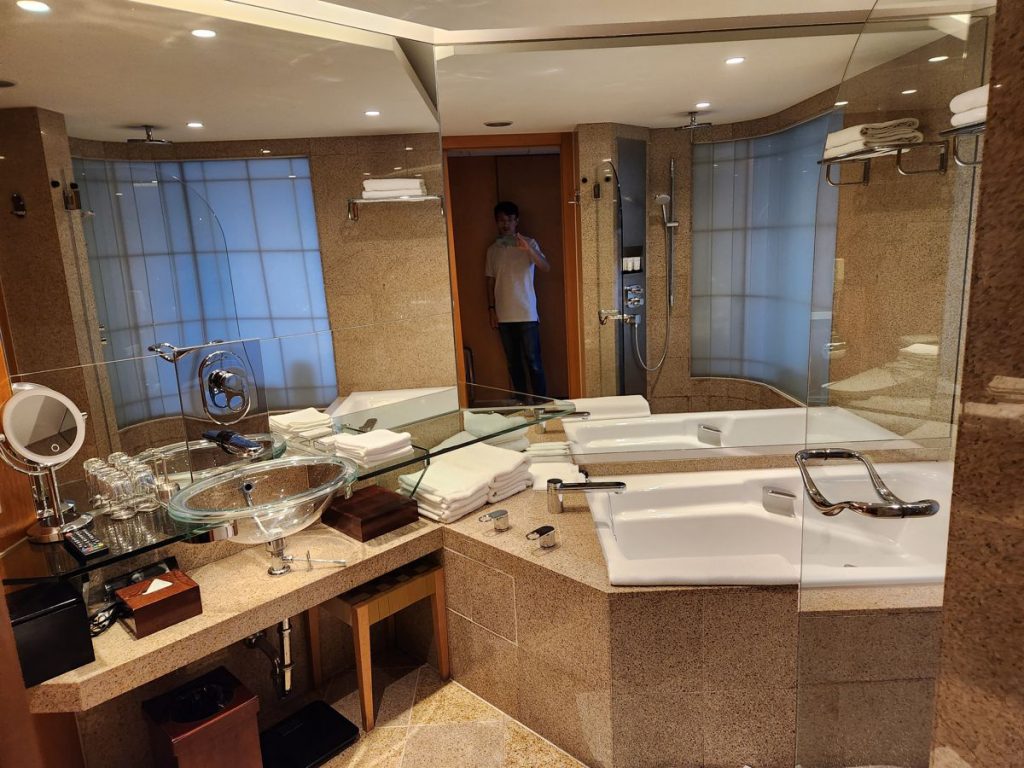
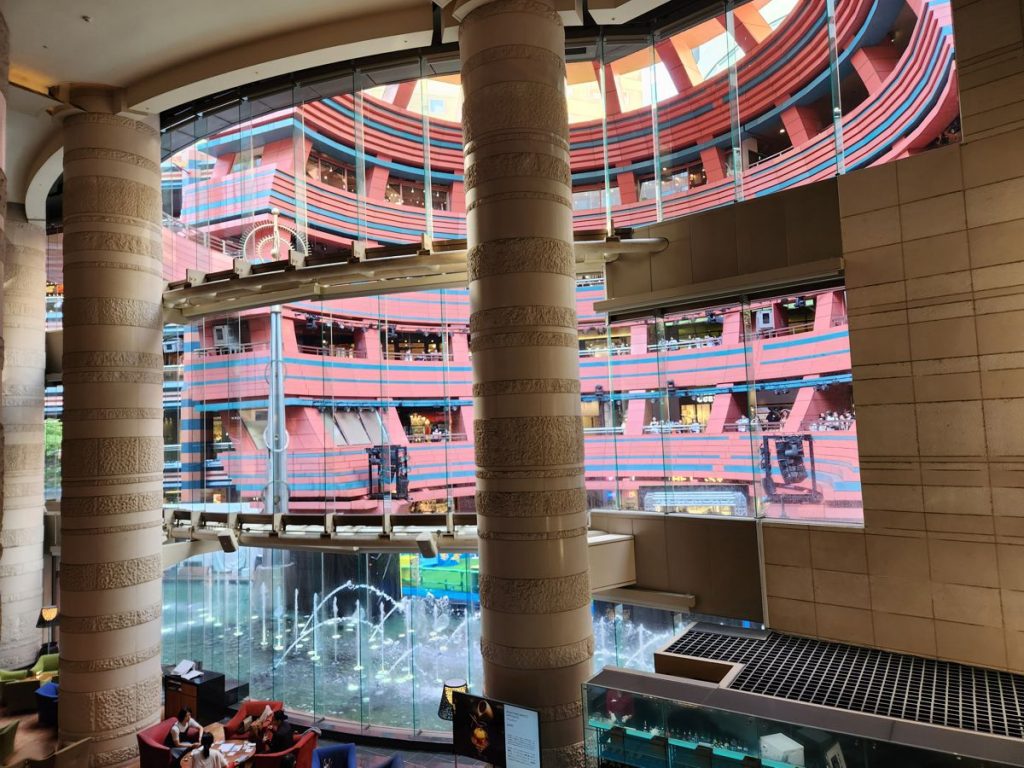
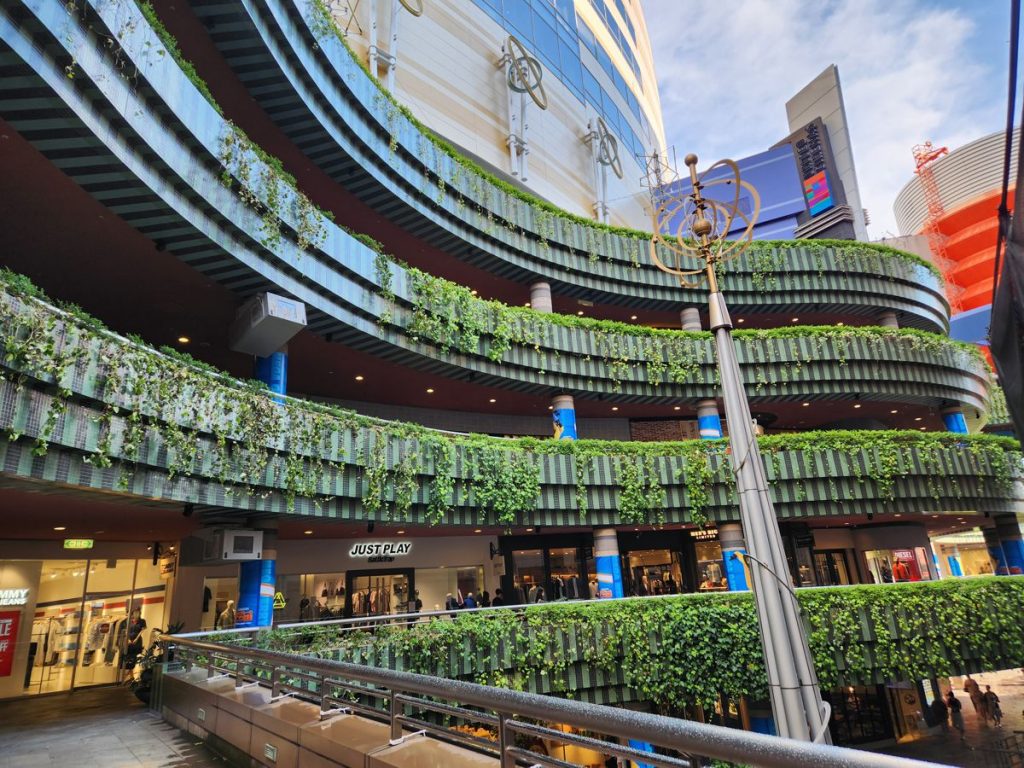
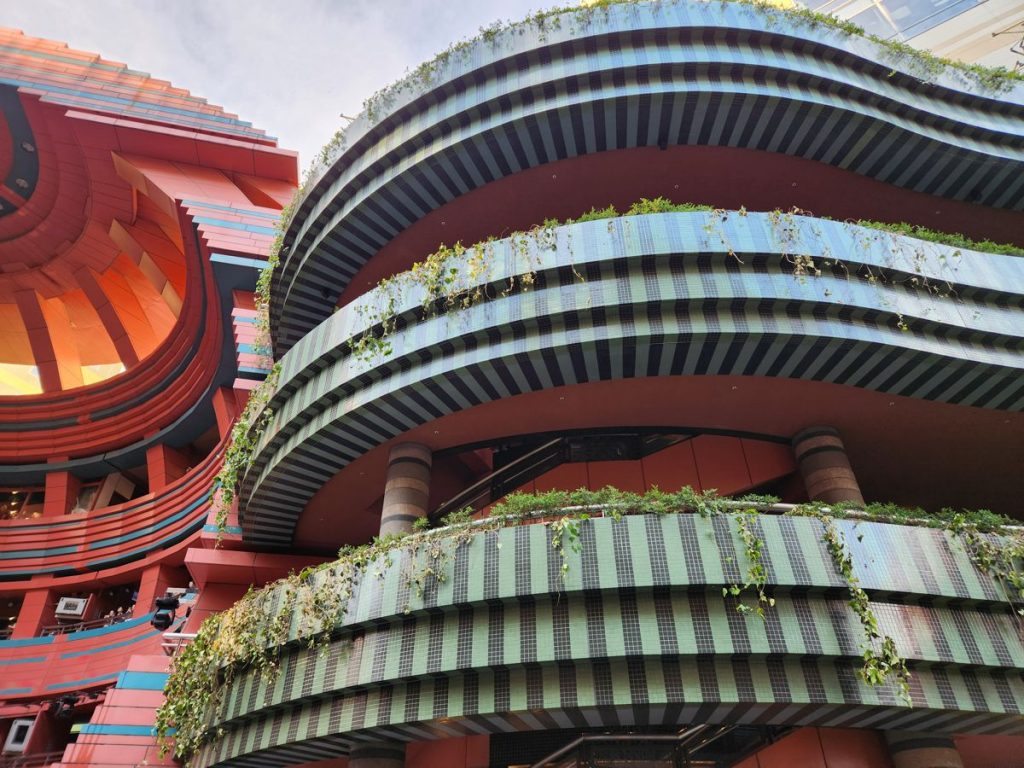
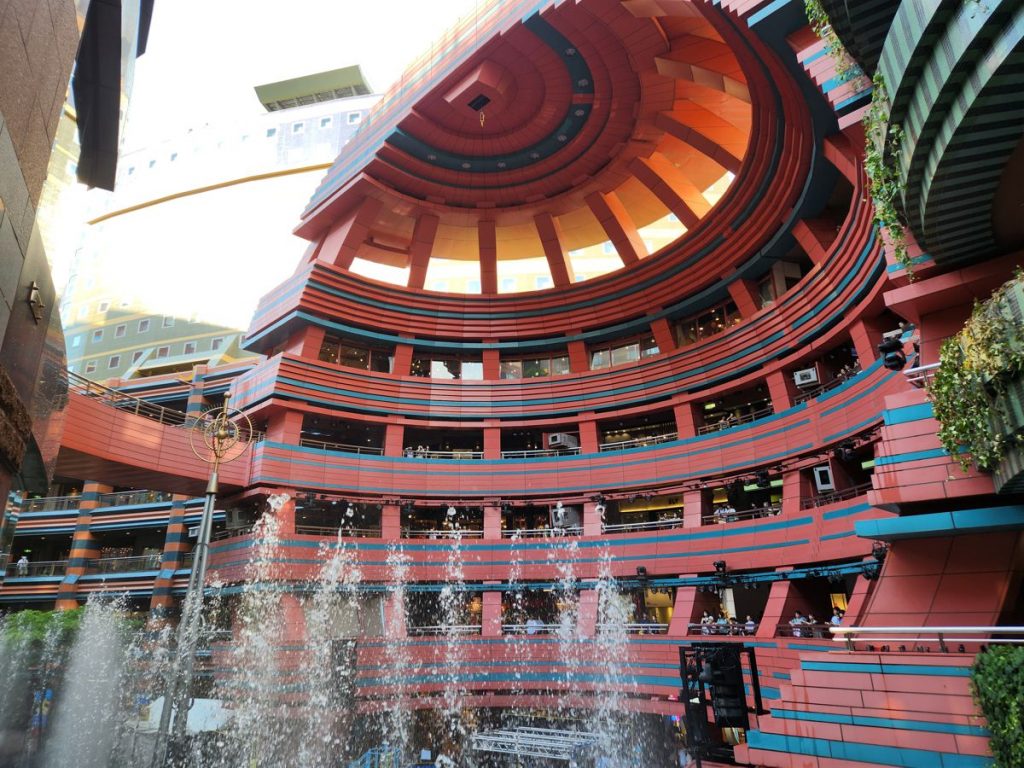
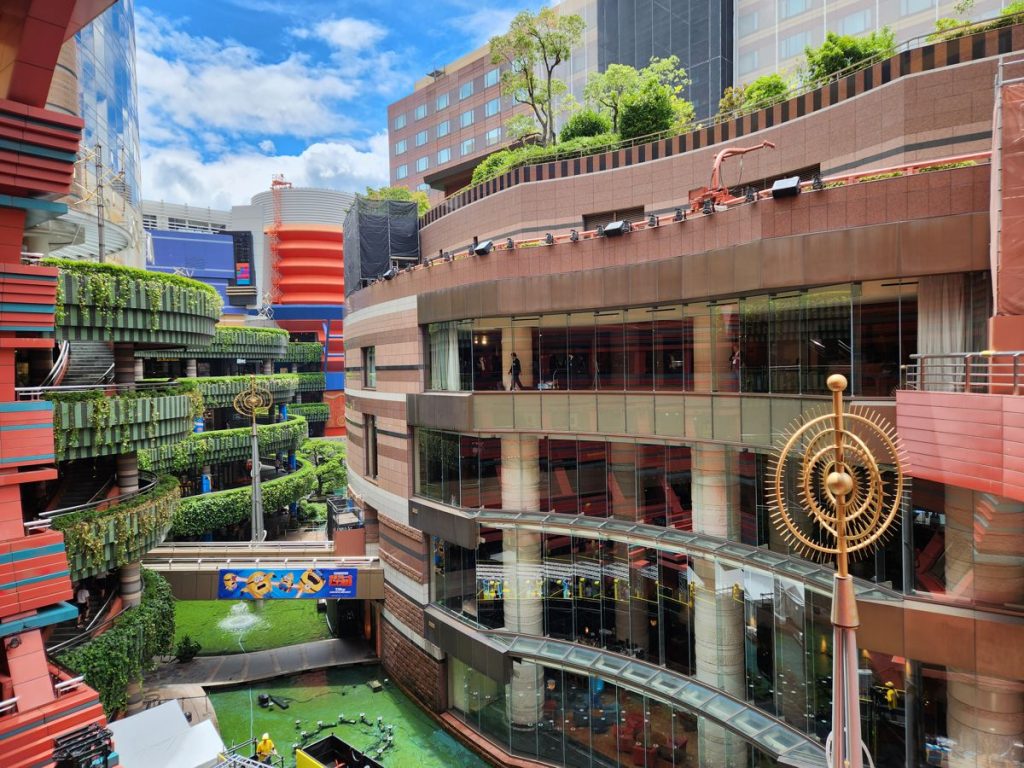
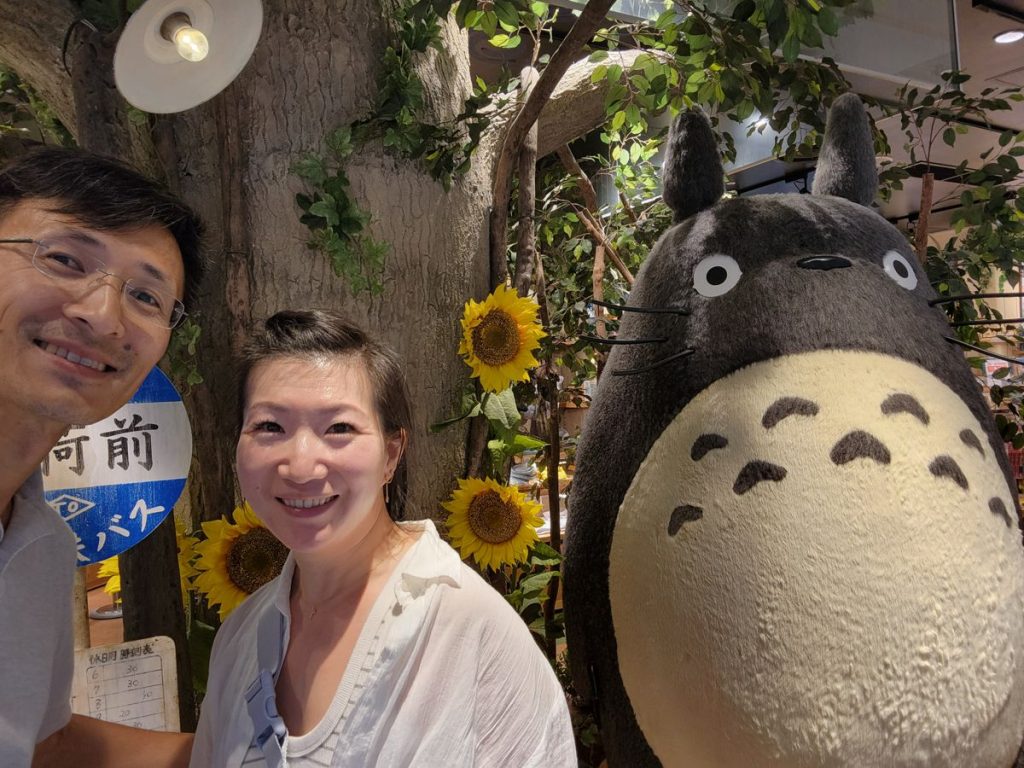
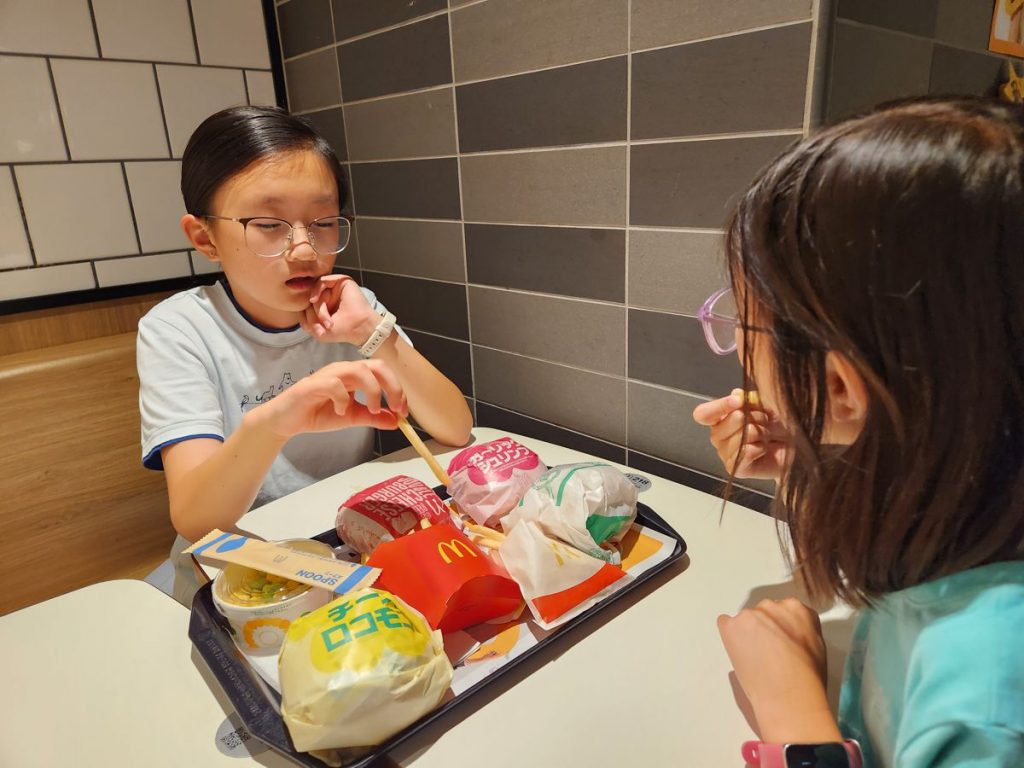
Yatai sort of
Fukuoka is apparently one of the few cities in Japan that still maintains a yatai (traditional food cart) culture. One of the main areas of yatai happened to be right across the street from our hotel. While we weren’t exactly in the mood to go out for street food, it seemed like a shame not to give it a shot.
We ended up in this outdoor food court of sorts, with a gathering of food trucks that reminded us of Tahiti. I think there were real yatai stands if we had gone a bit further, and these trucks may have been a trap for ignorant tourists like us. It wasn’t necessarily bad, but I was scratching my head about people hyping it up so much. We ended up just grabbing a bit of takoyaki to briefly partake in the environment. The ambience was nice, though.
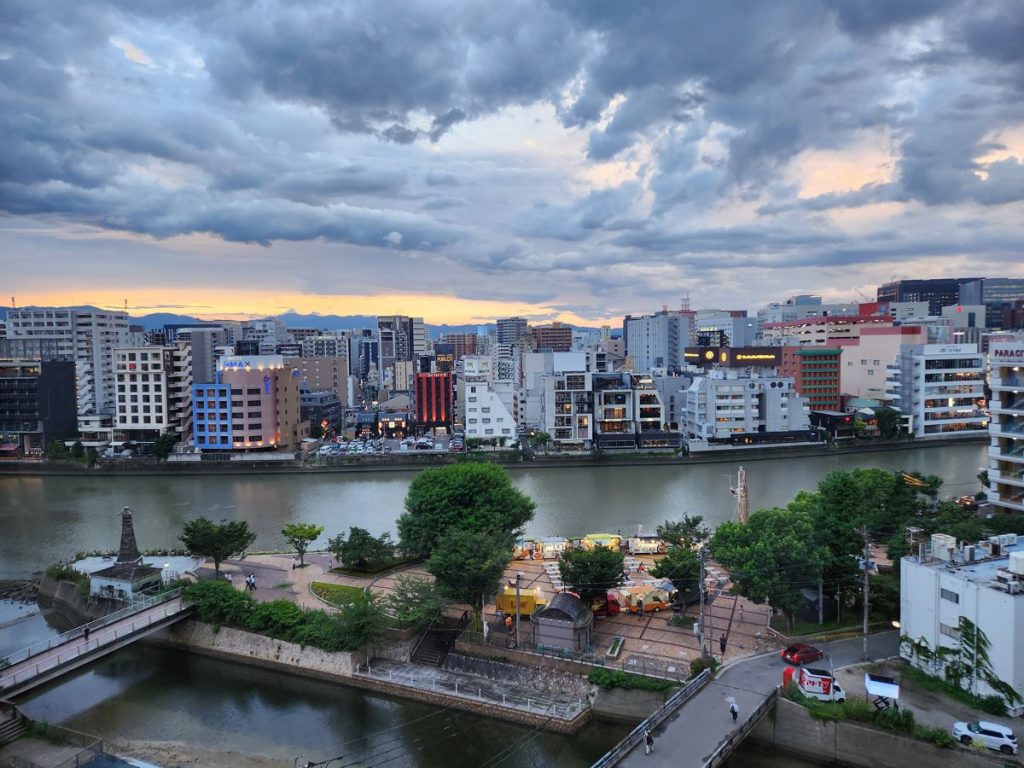

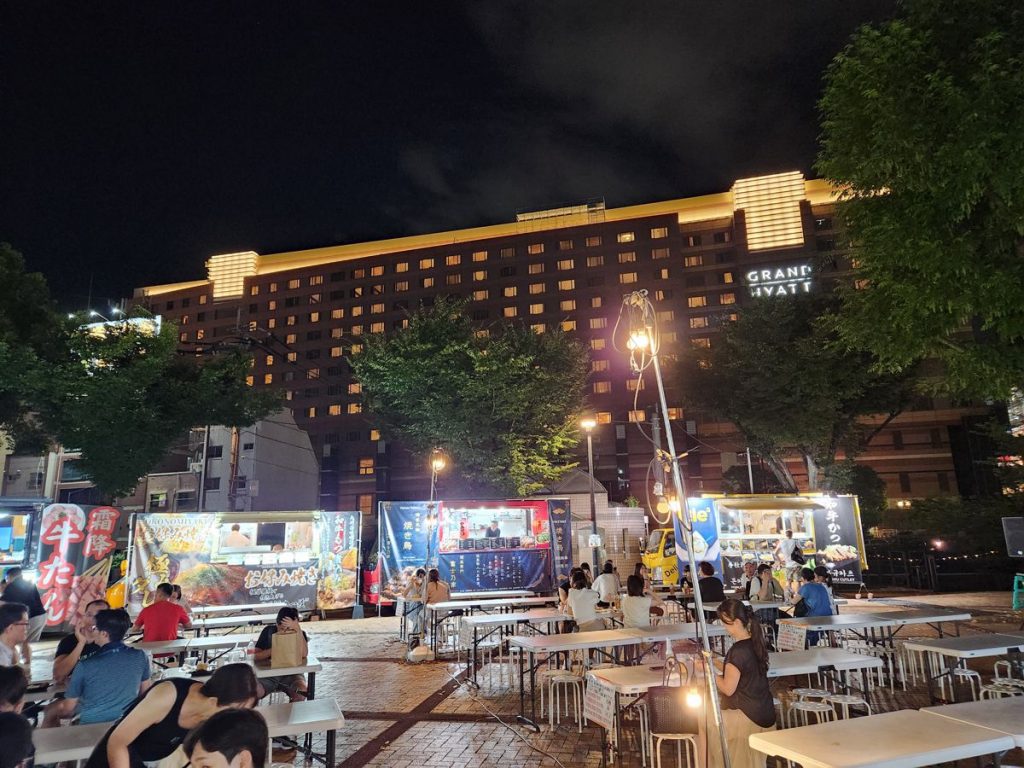
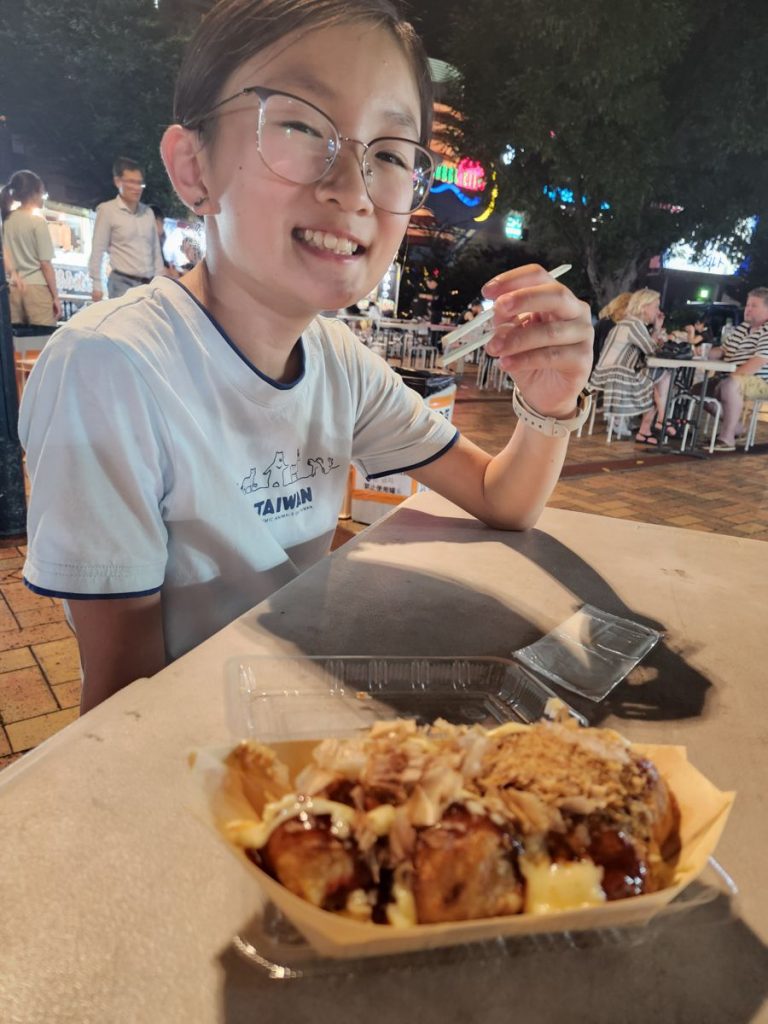
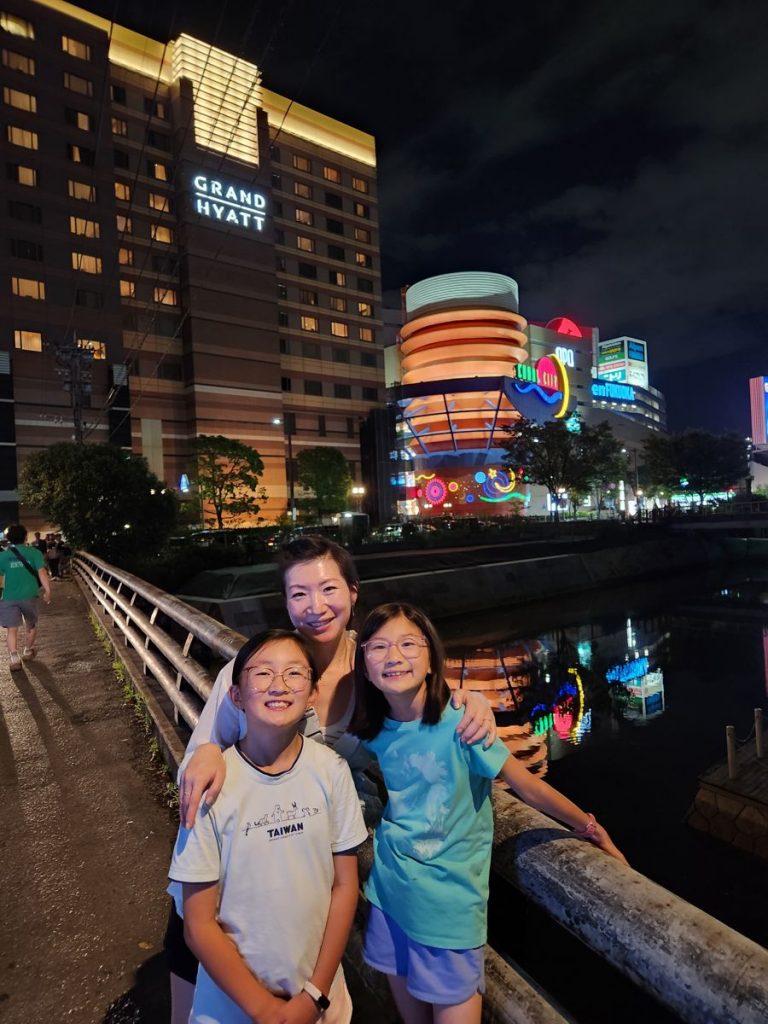
Gion & FUK Coffee
After a convenience store breakfast, we walked half a mile to old town Hakata. This part of town wasn’t particularly impressive to look at, but had a bunch of temples each with 1,000 +/- 200 years of history. Hakata was the closest port to mainland Asia, so back in the days all sorts of culture were imported into Japan through here. Buddhism was on the list, and so were the pasta (udon, soba, manju) making techniques.
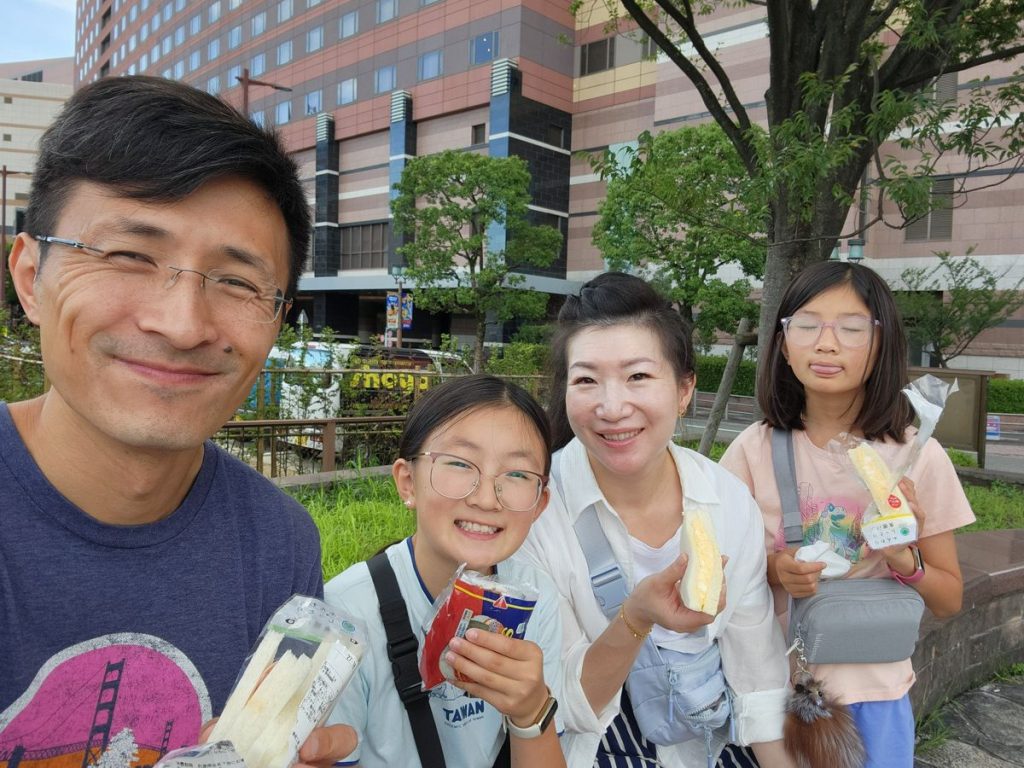
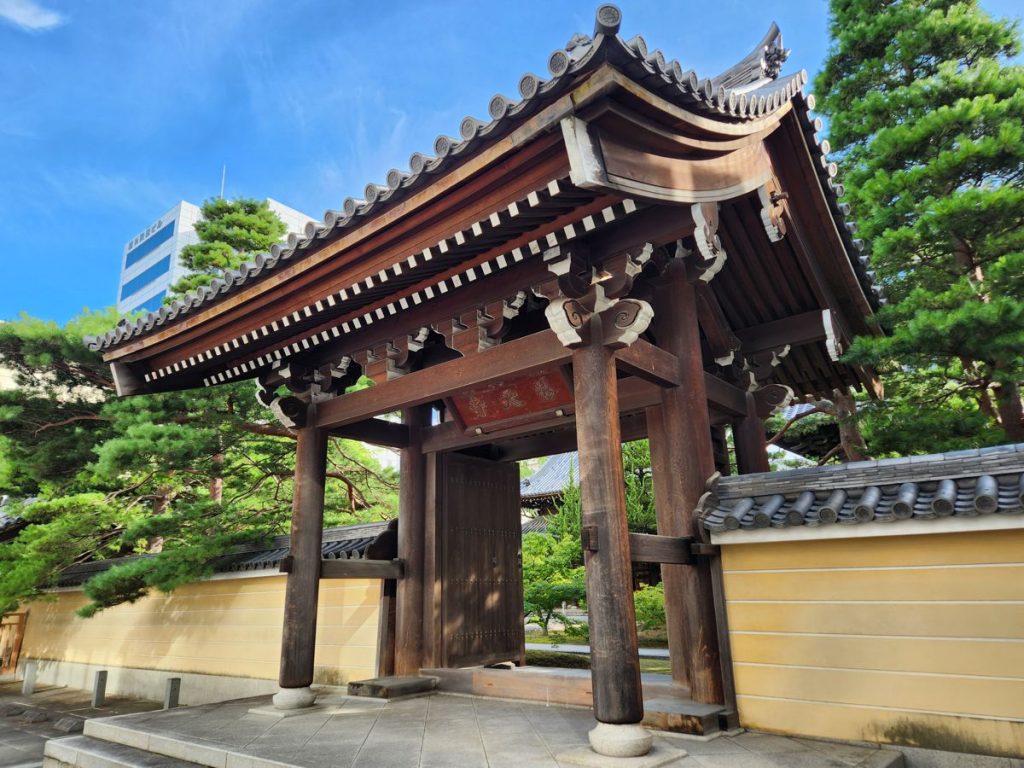
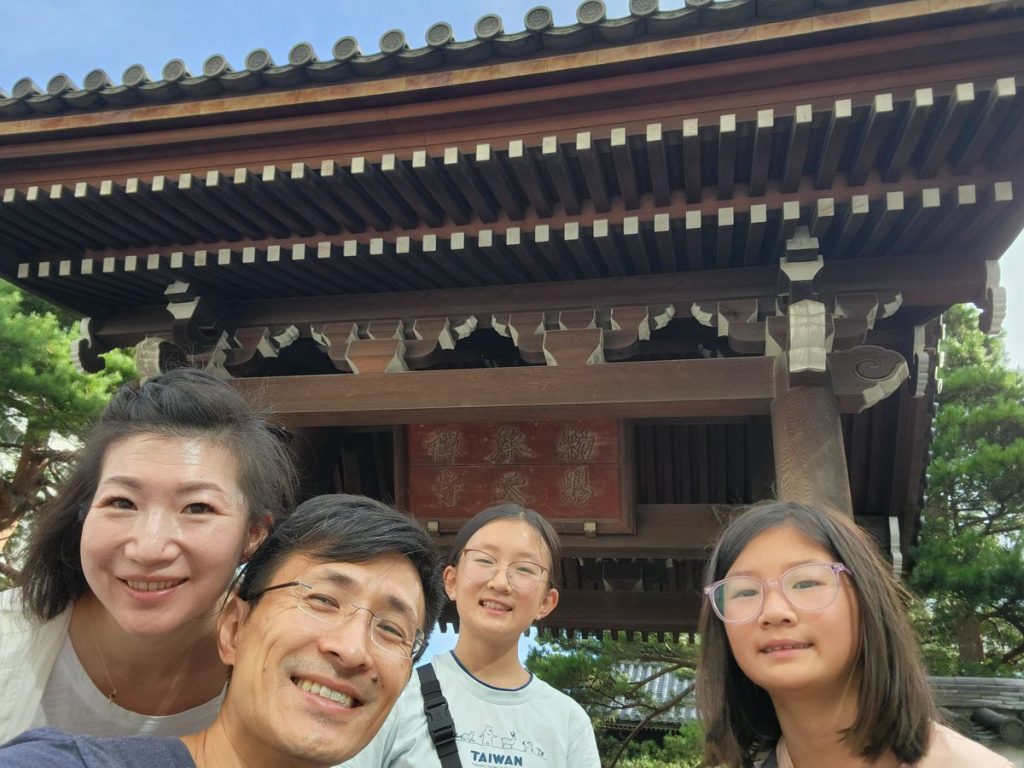
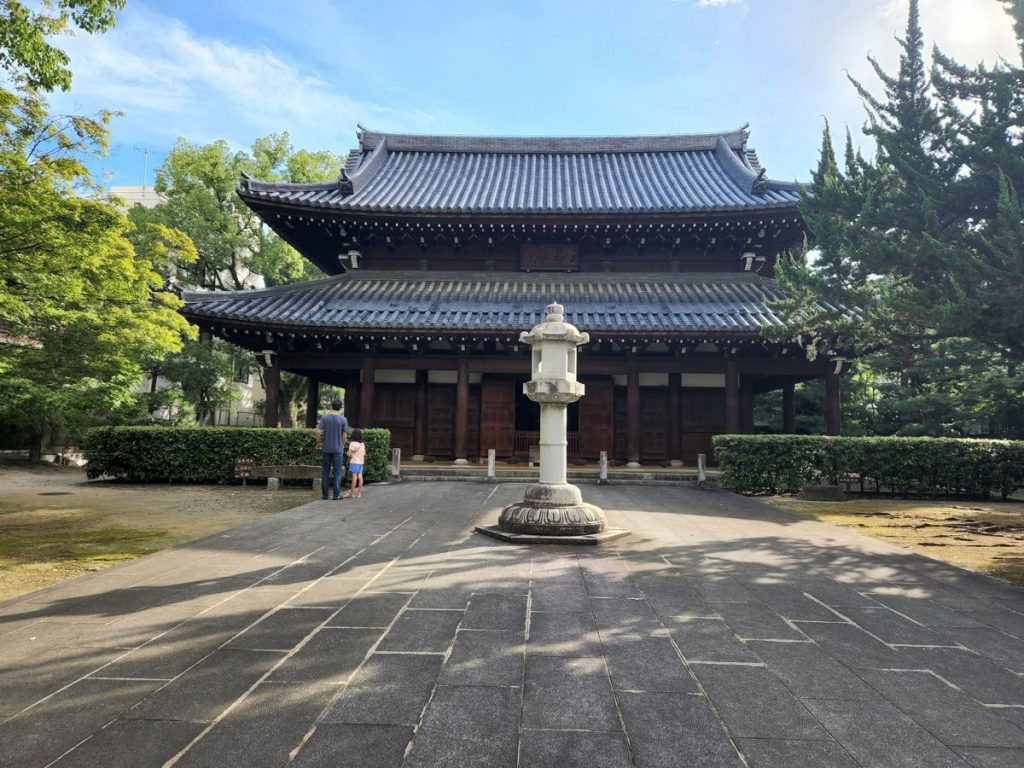
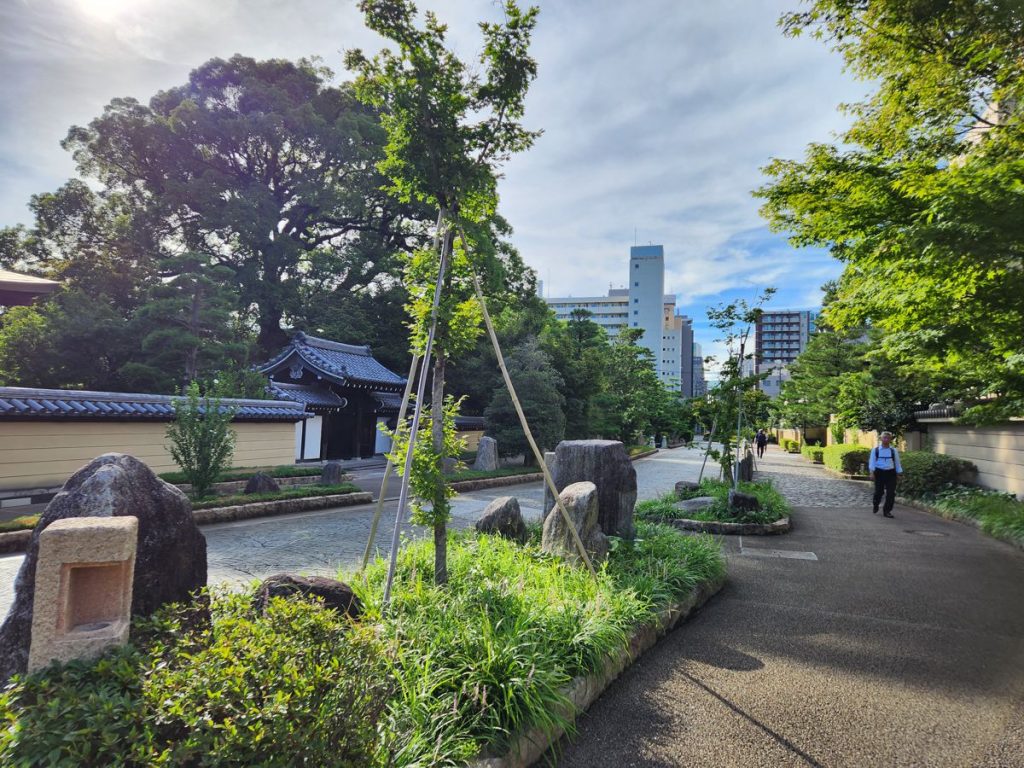
Finally, we made a stop at a cafe whose owner definitely had a sense of humor… note that FUK is the city’s airport code.
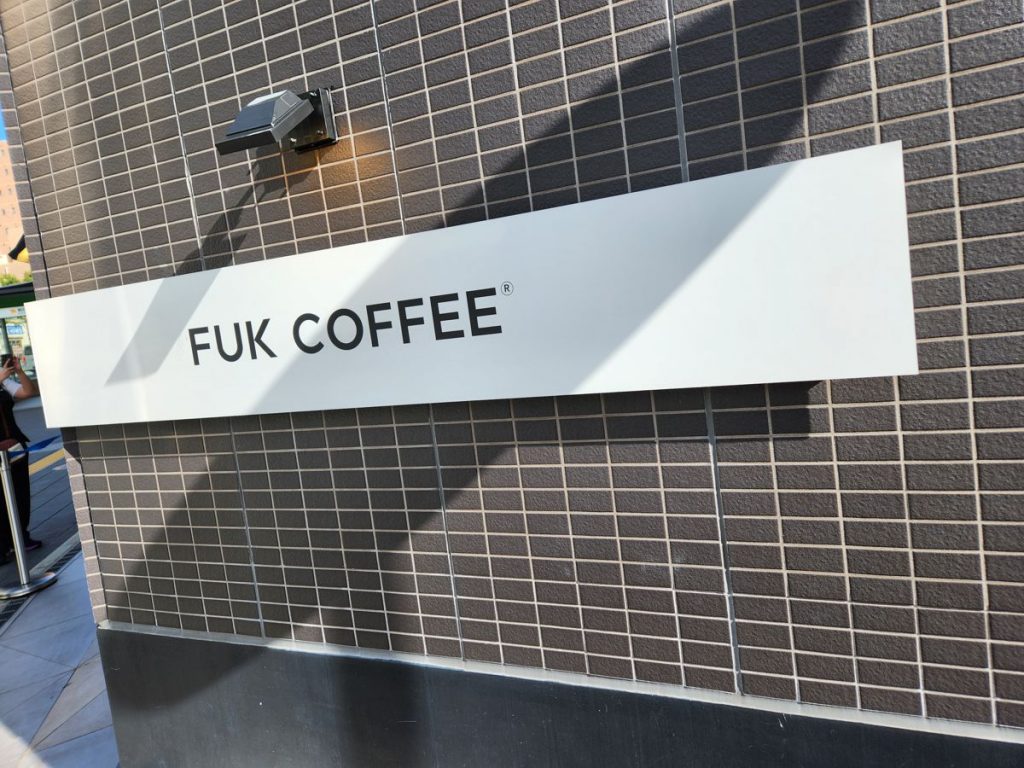
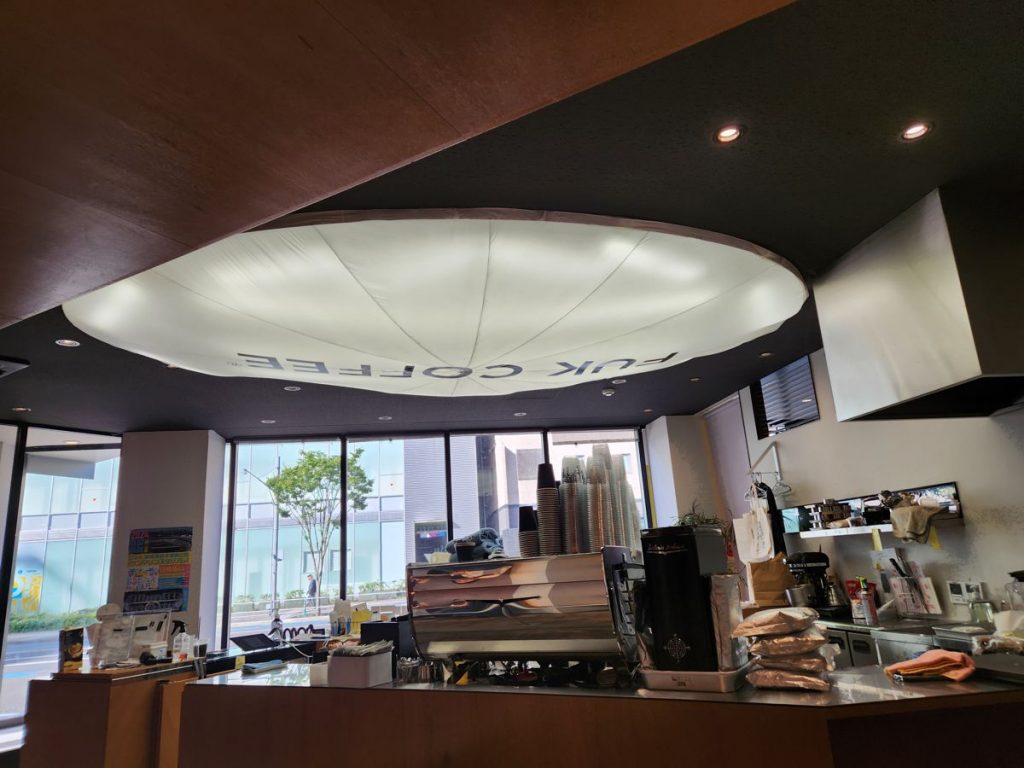
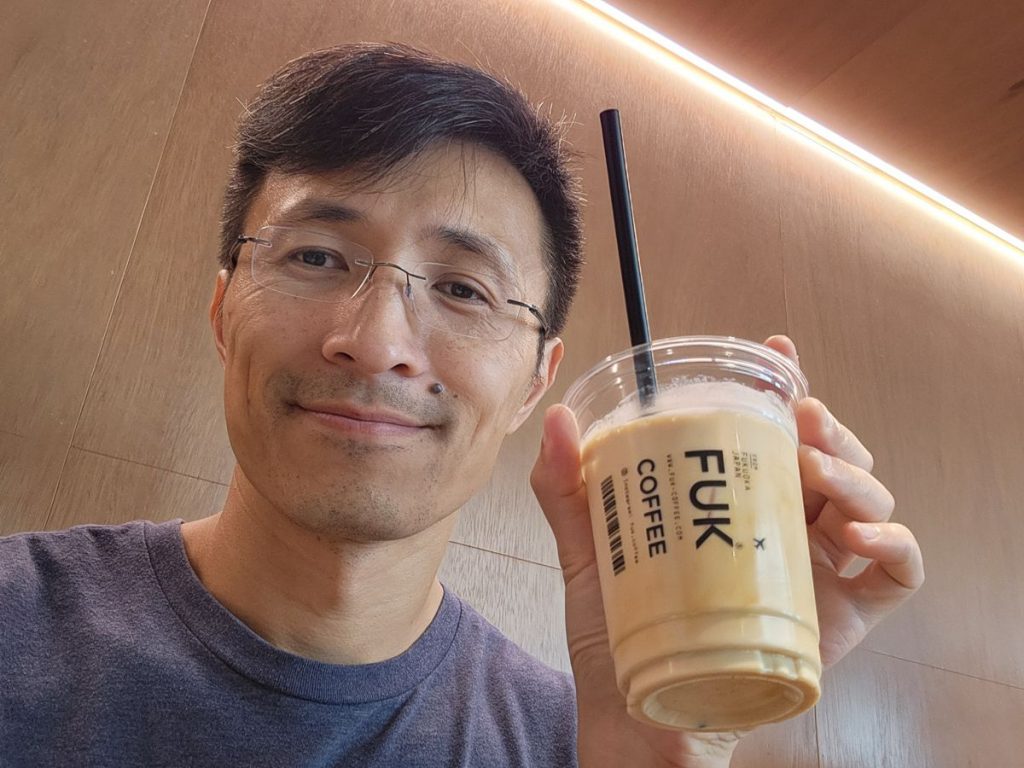
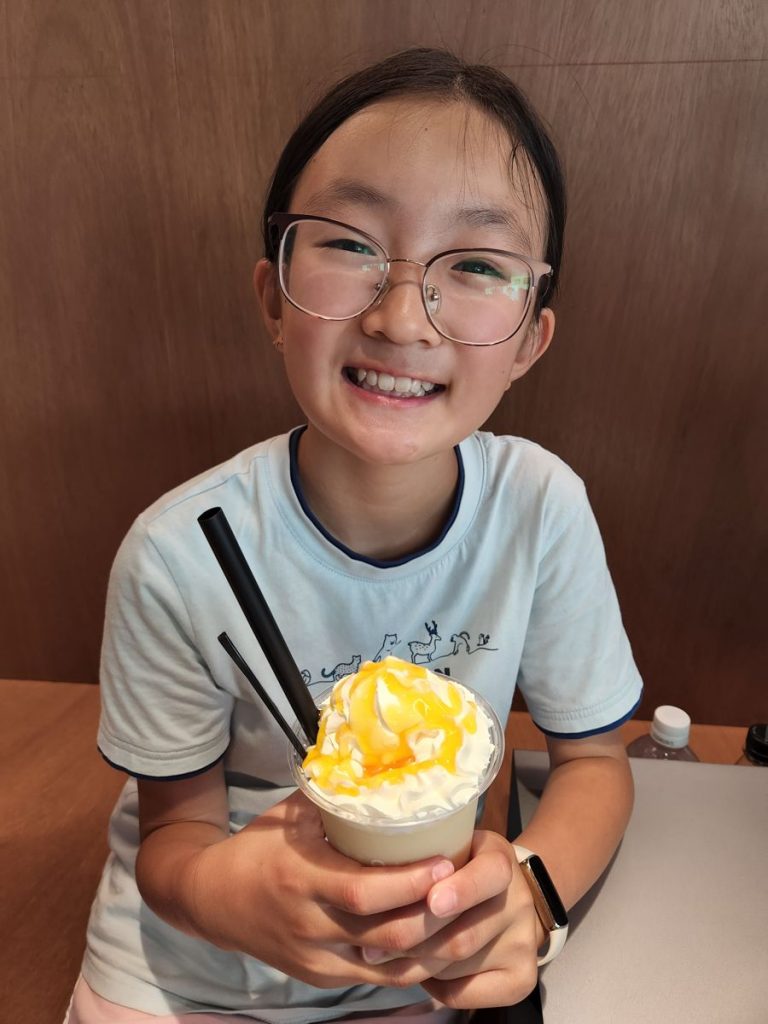
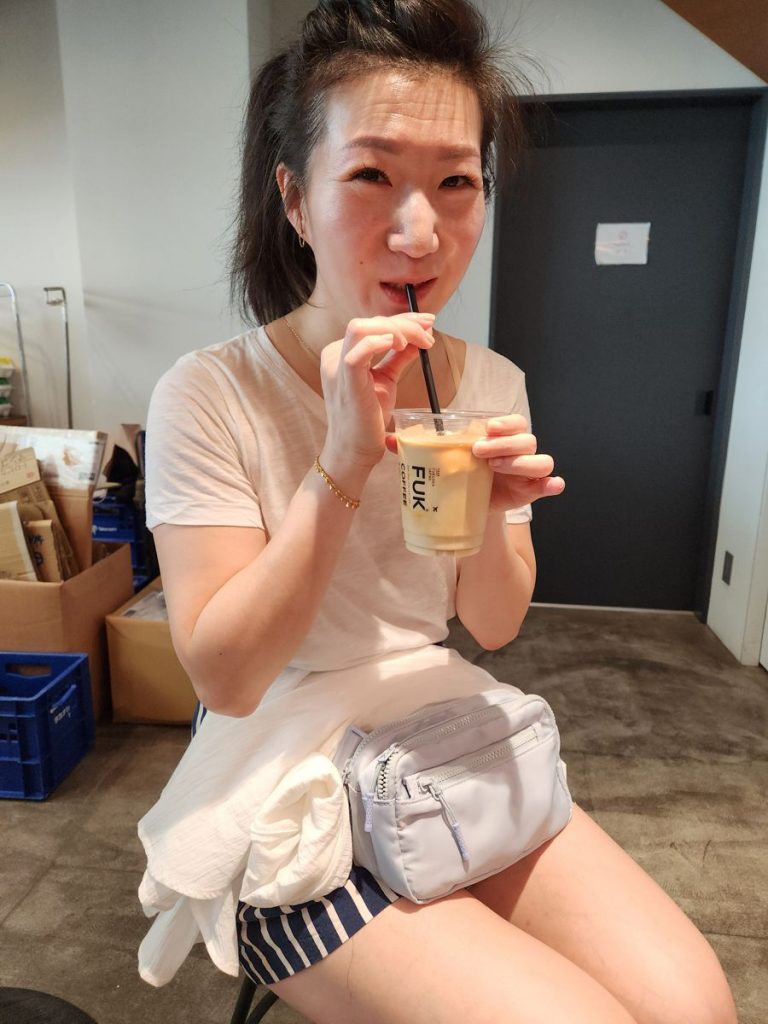
Korea & Japan 2024 Index
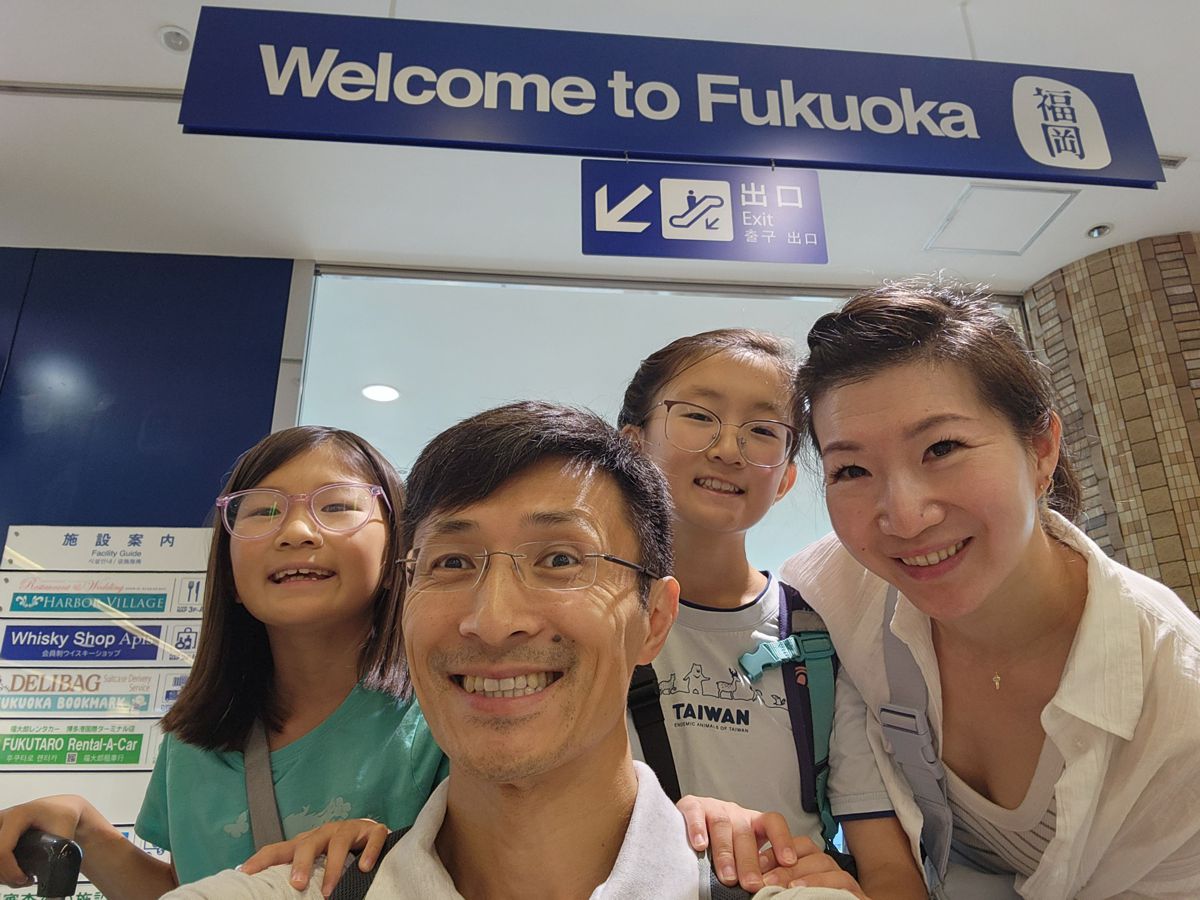
No Comments